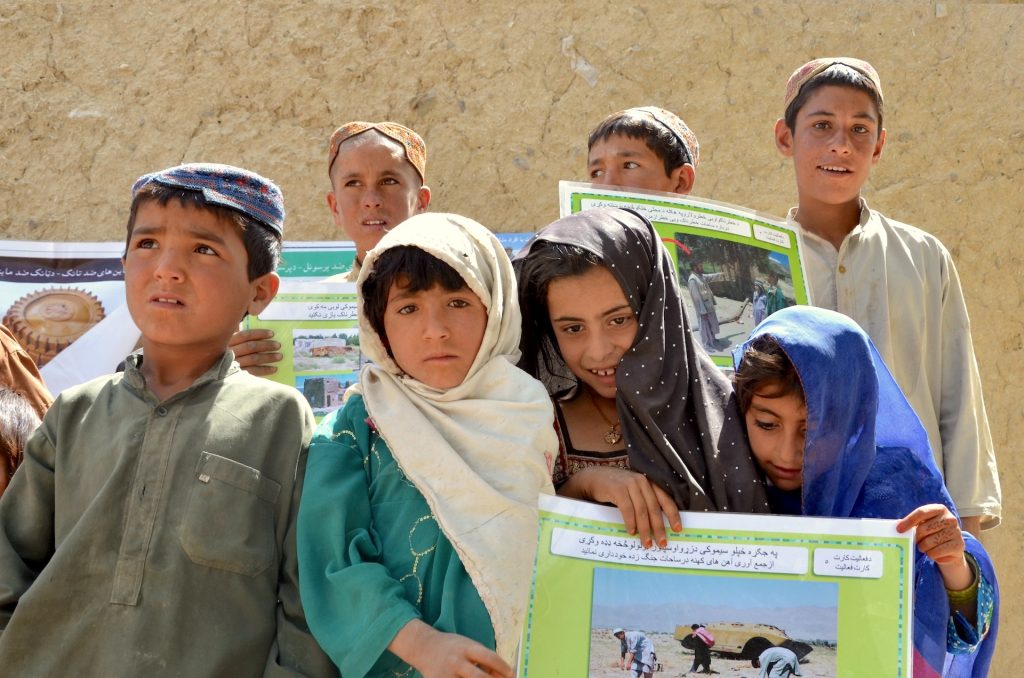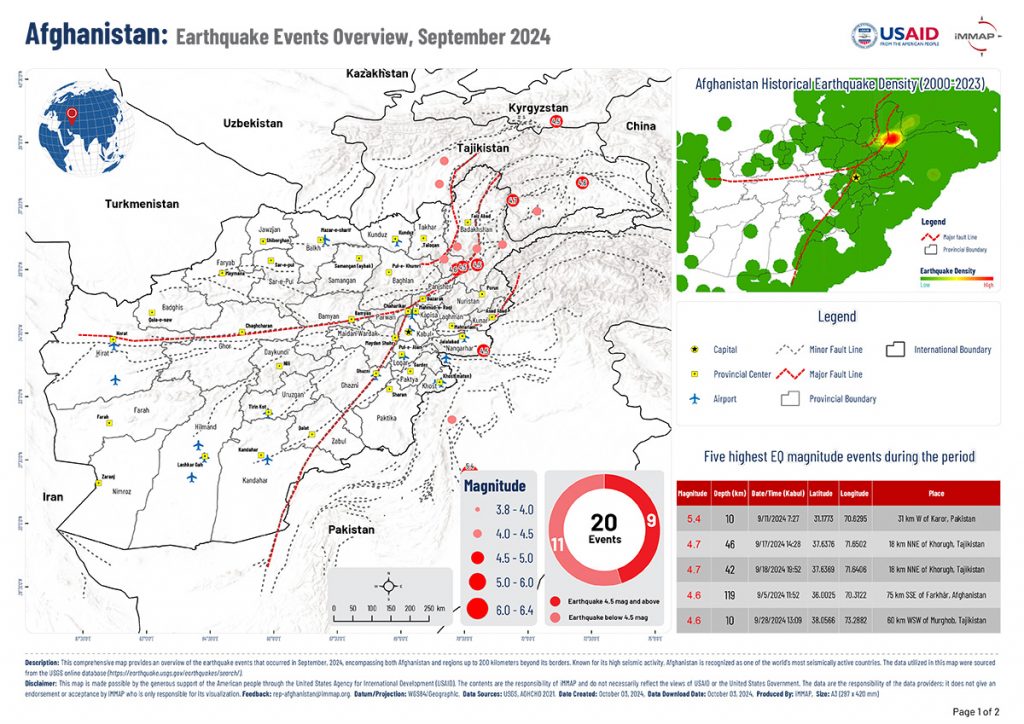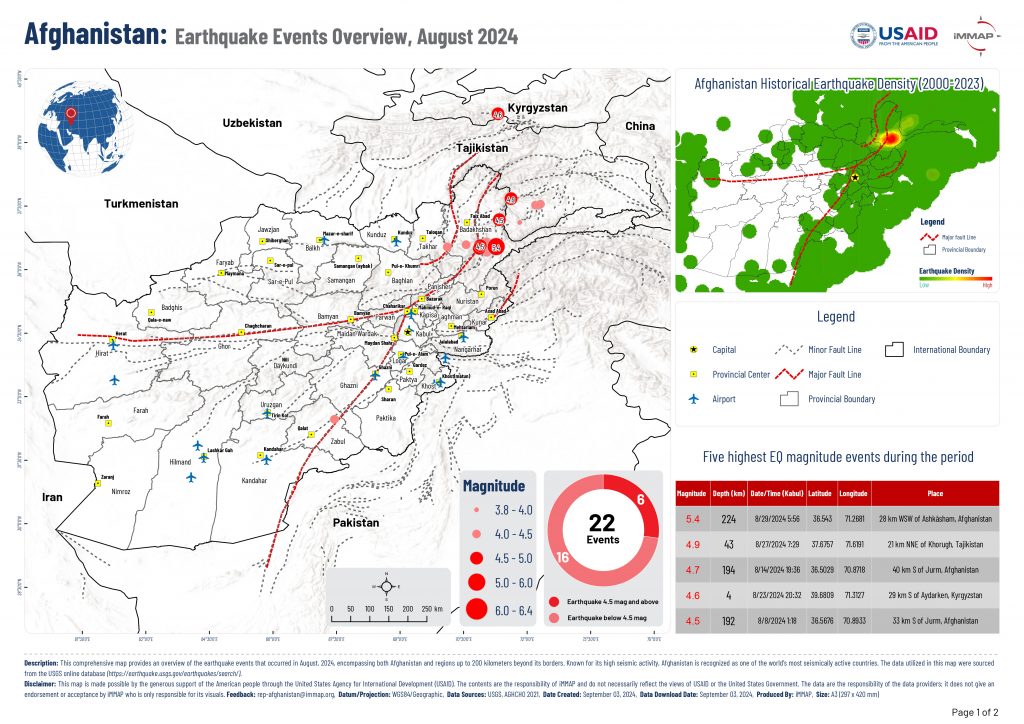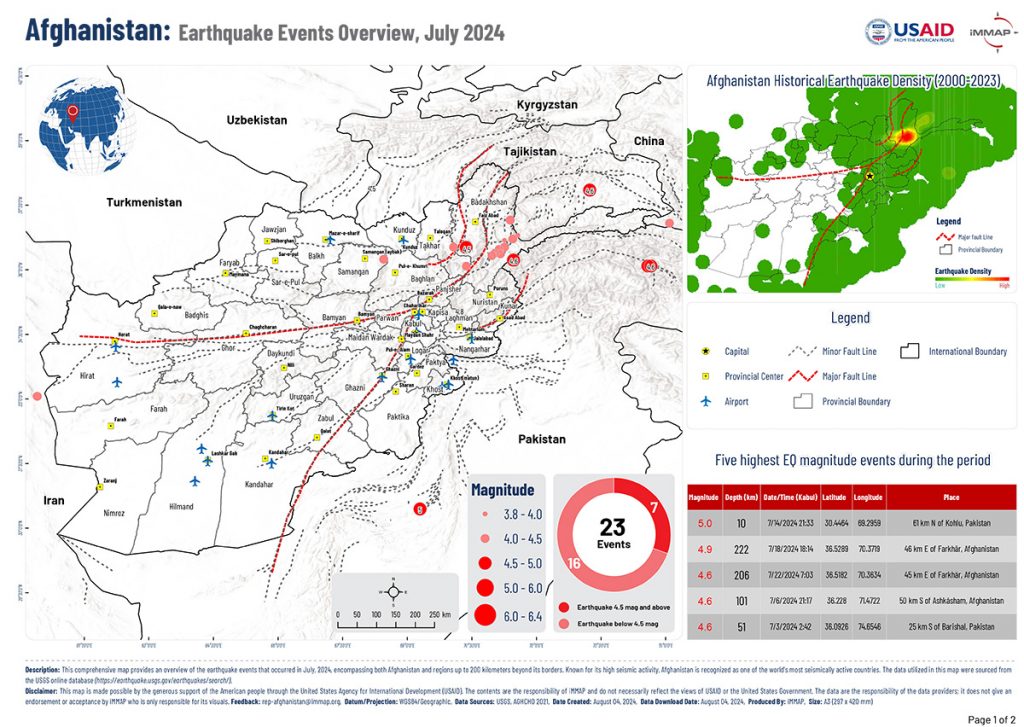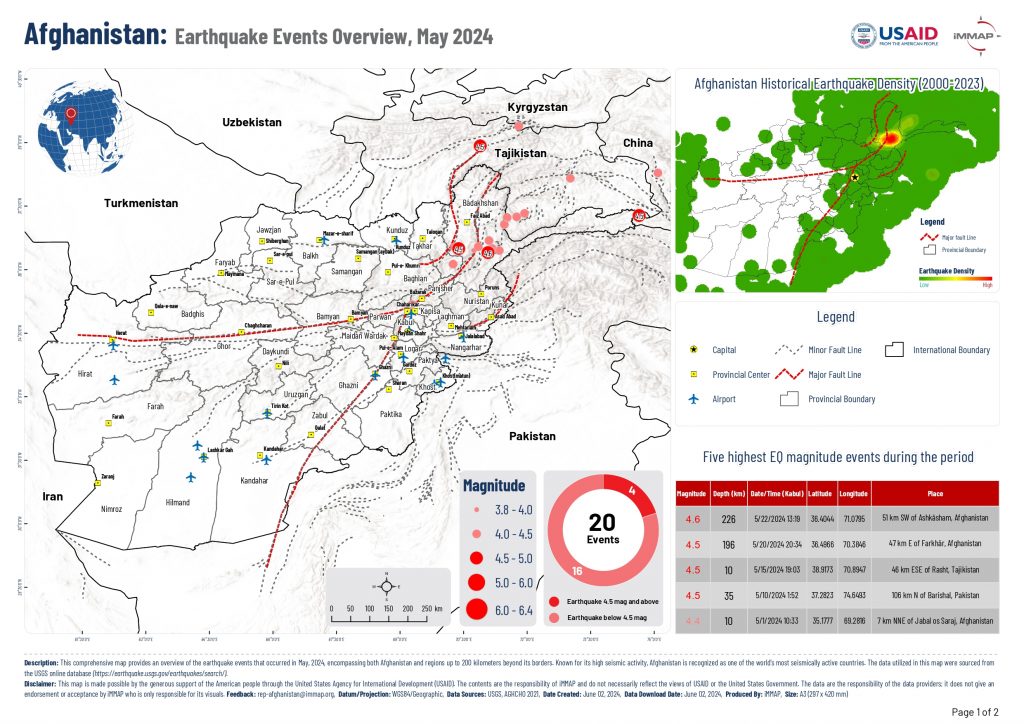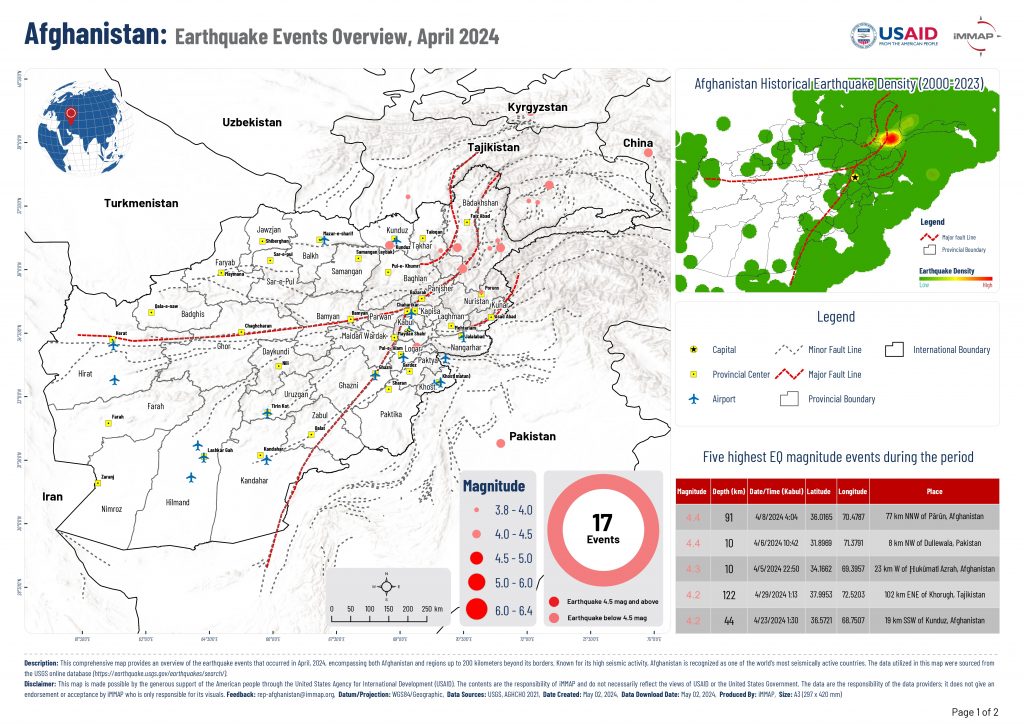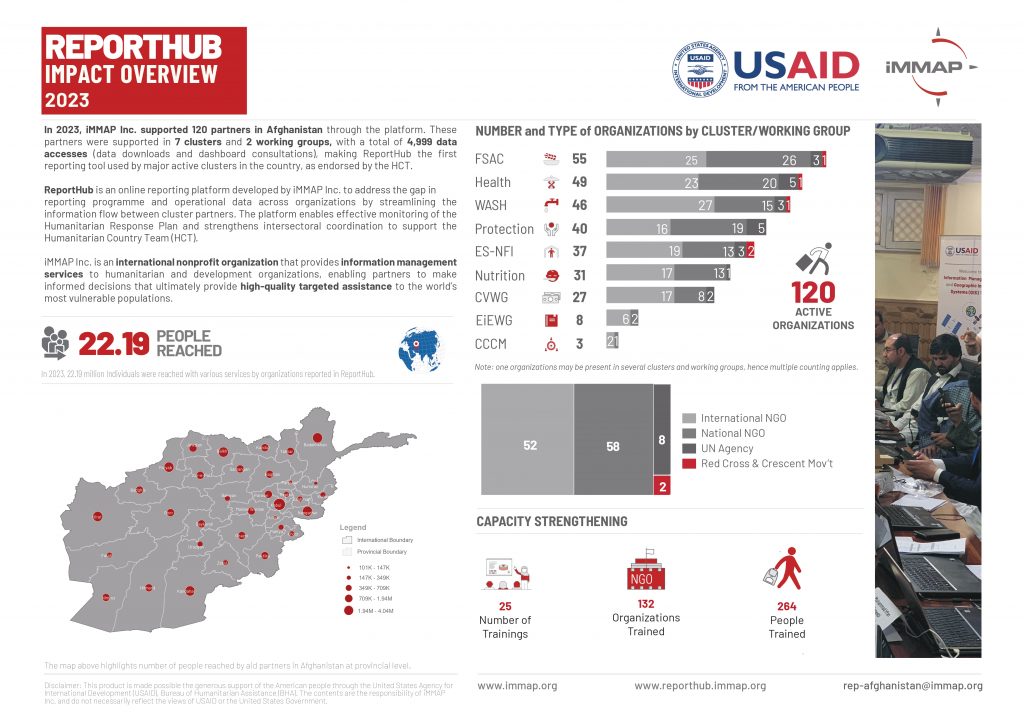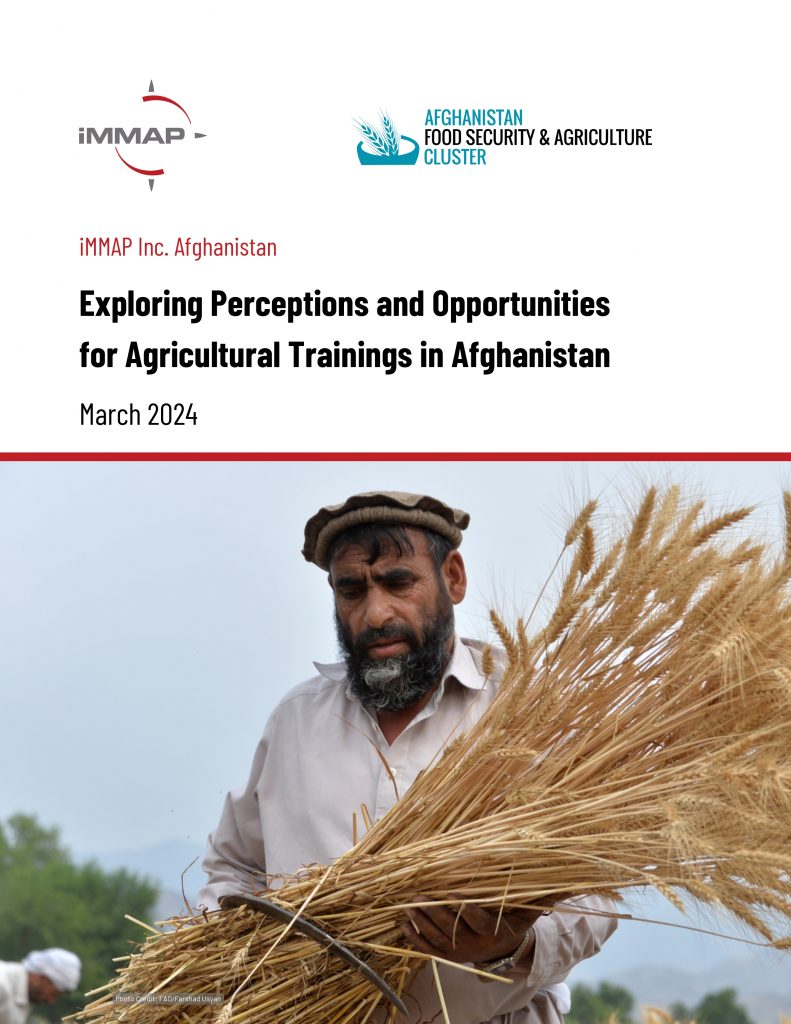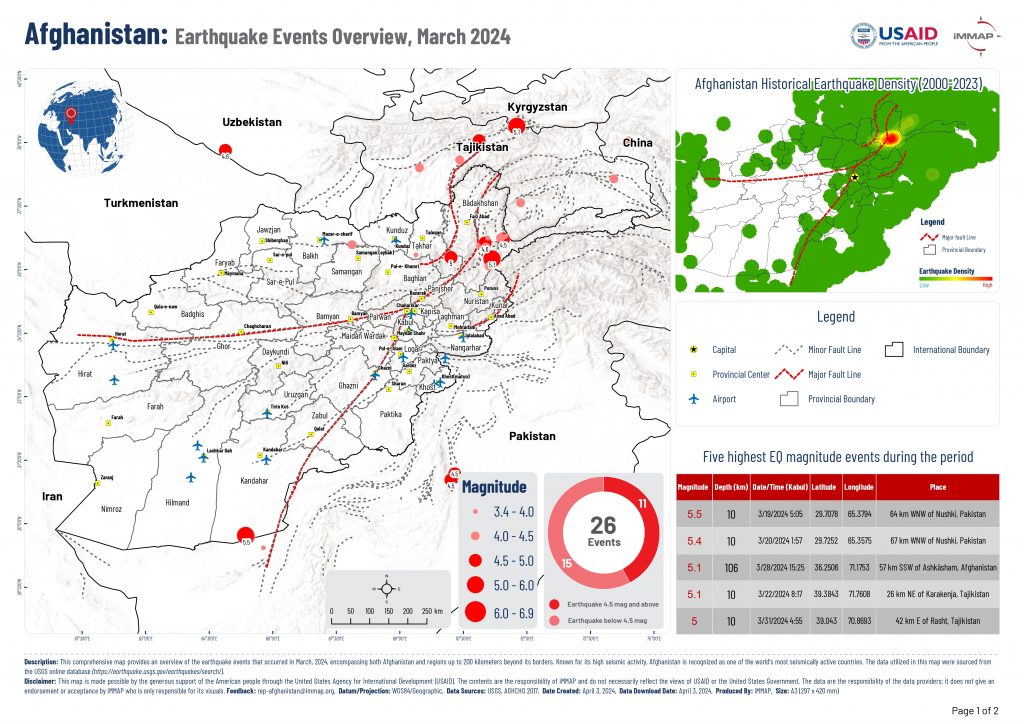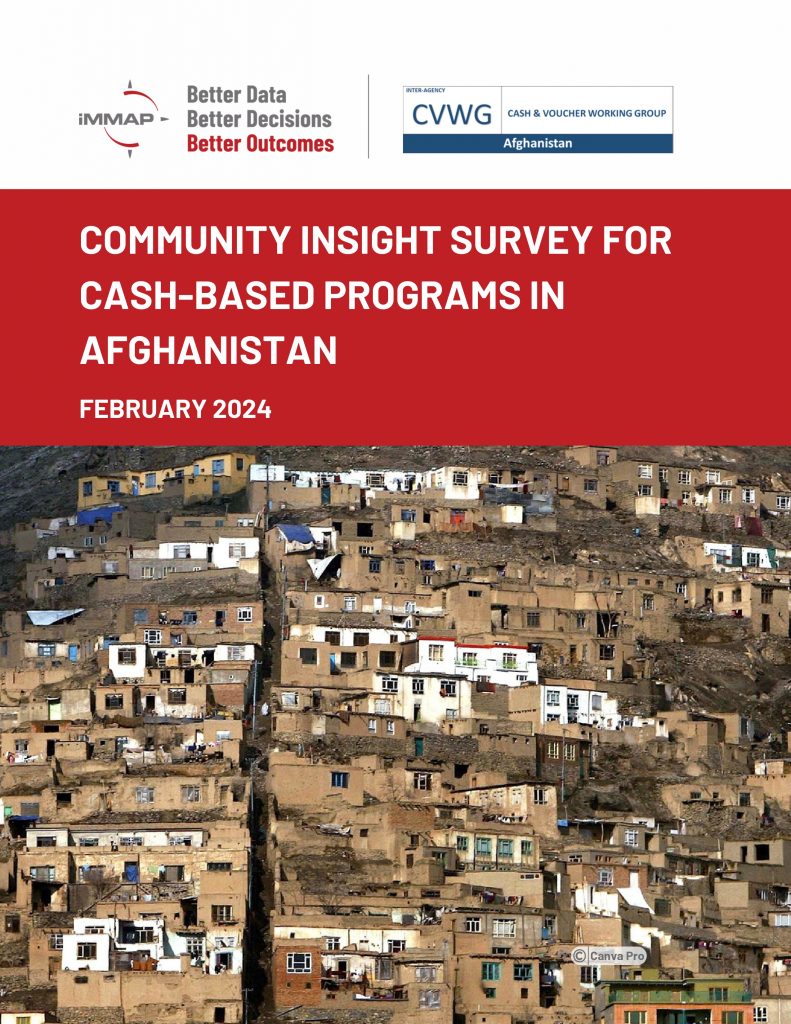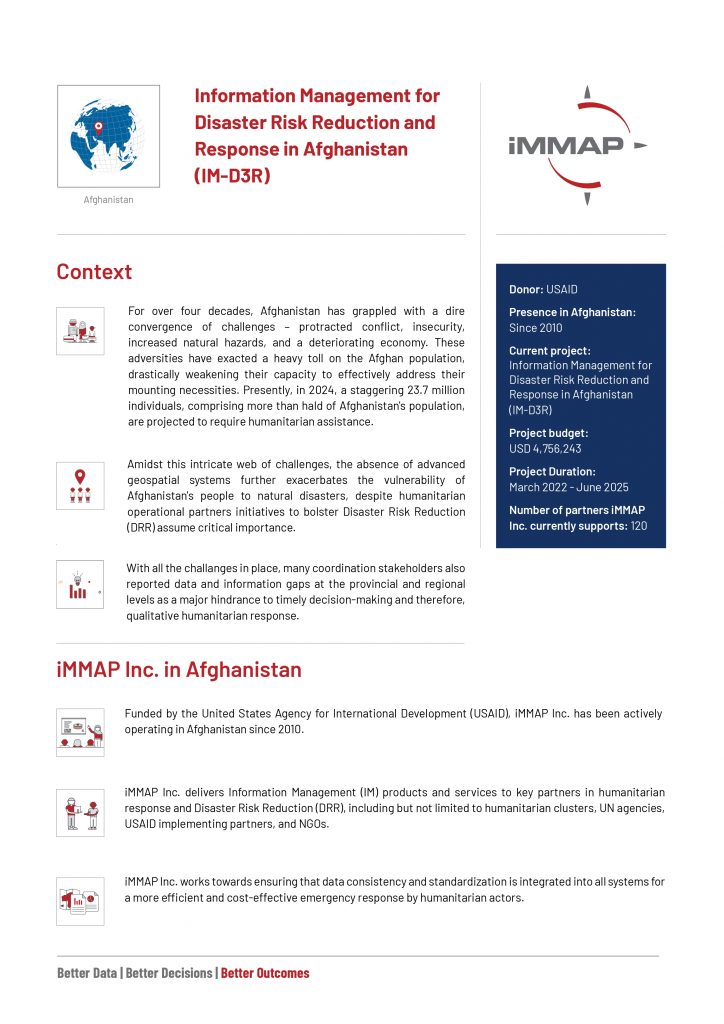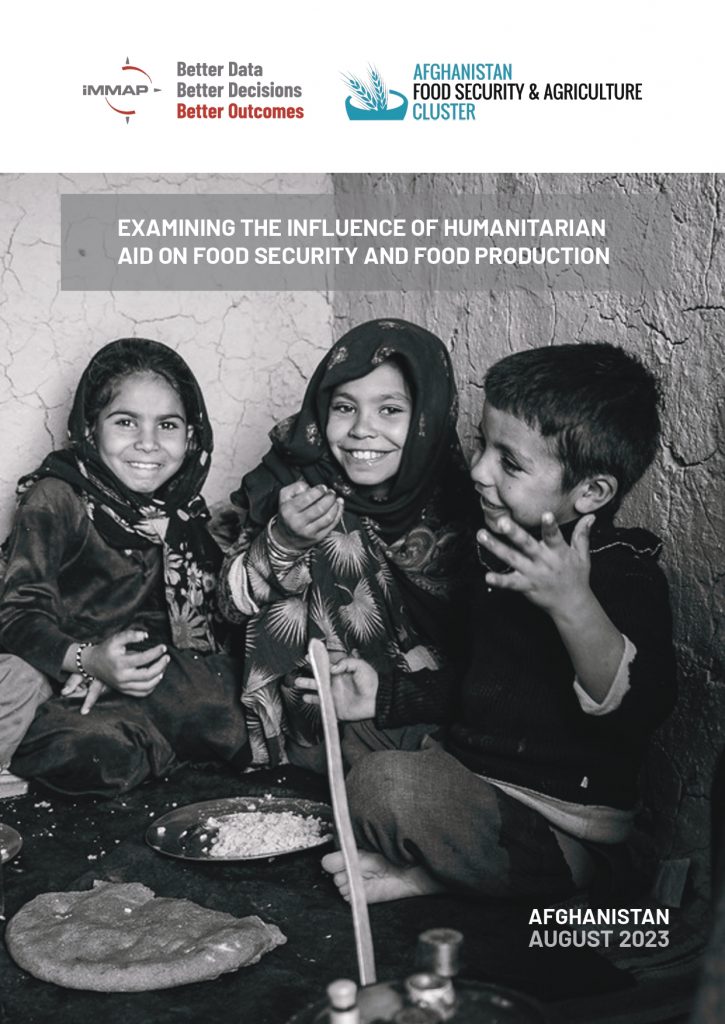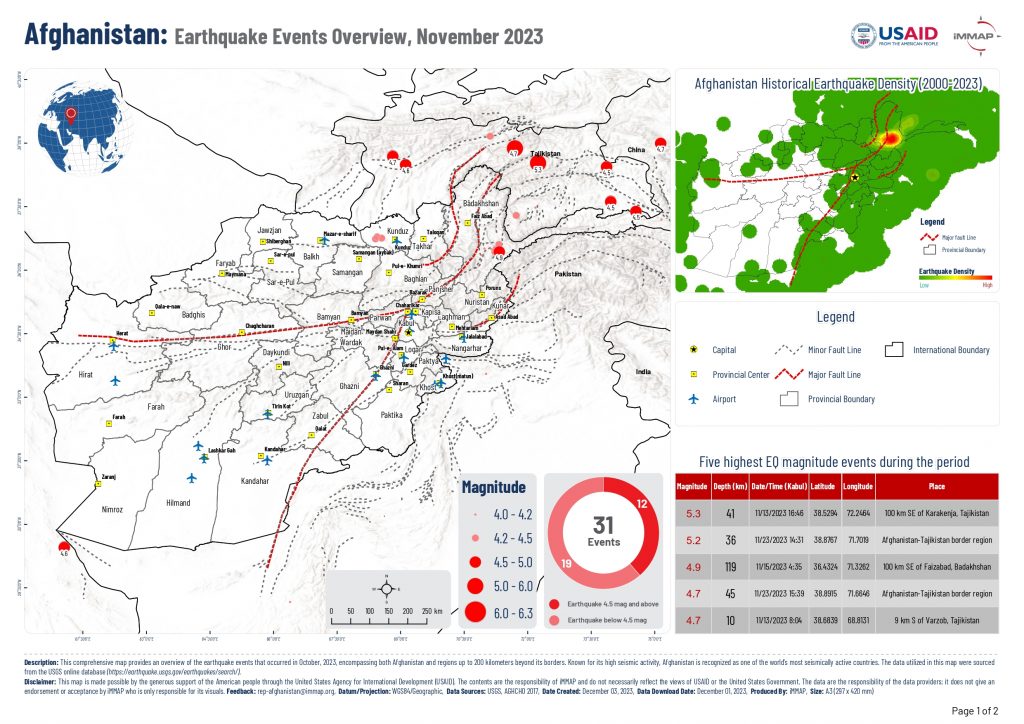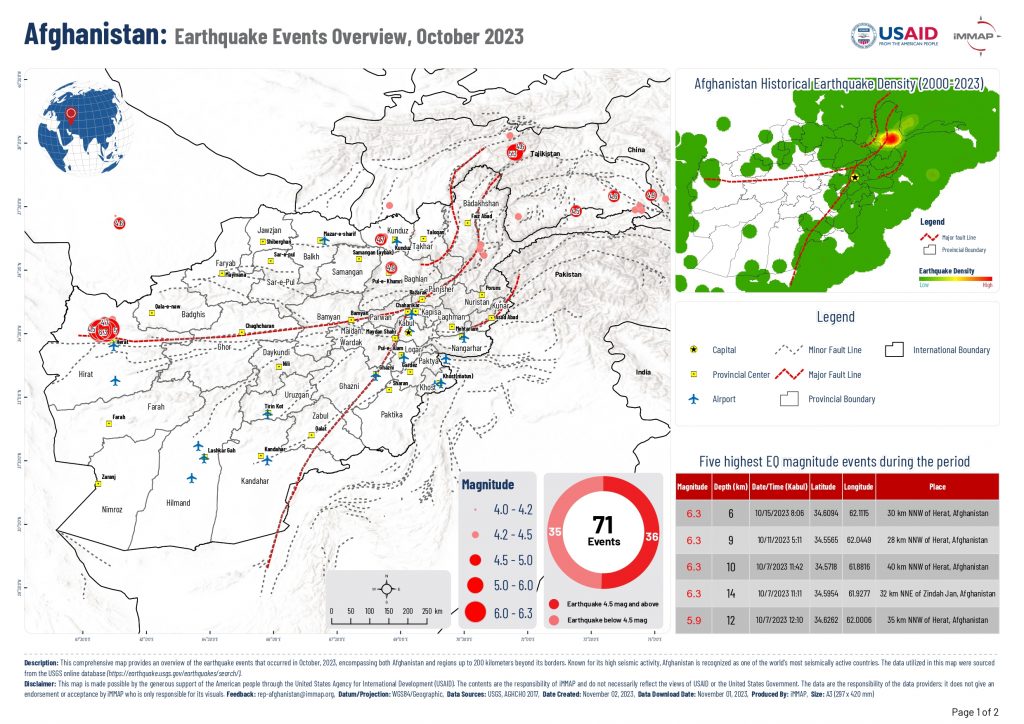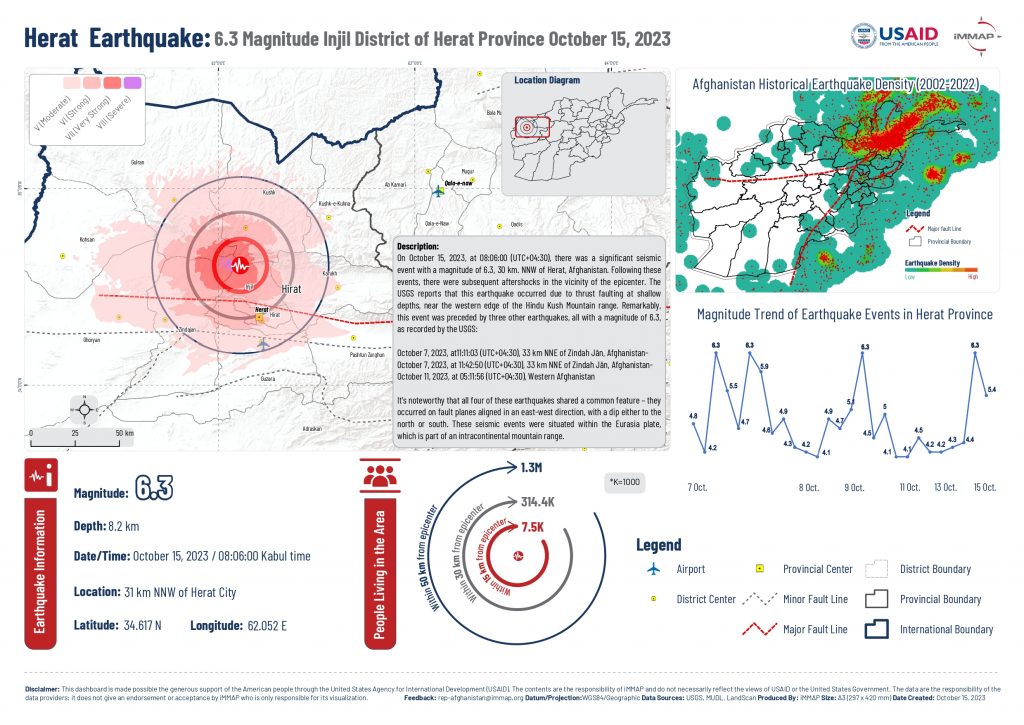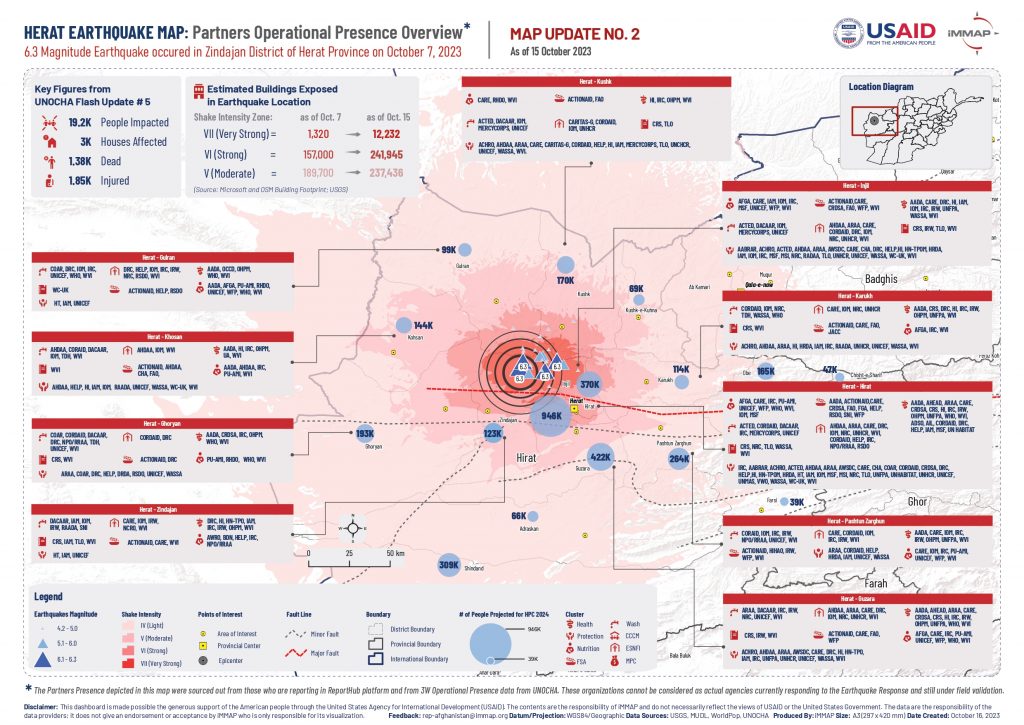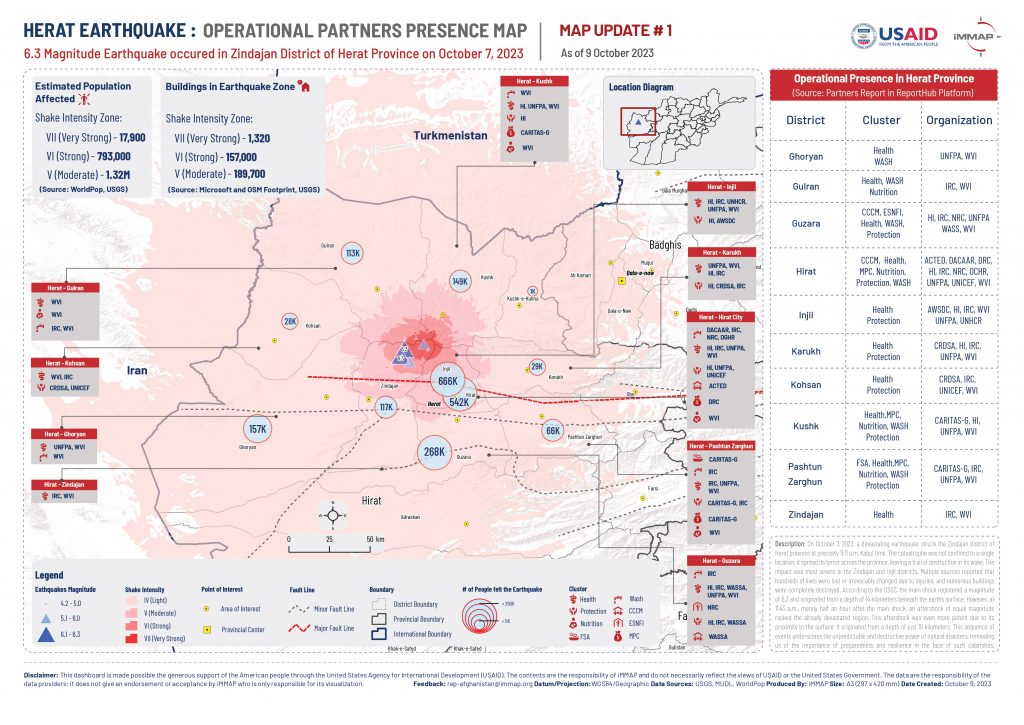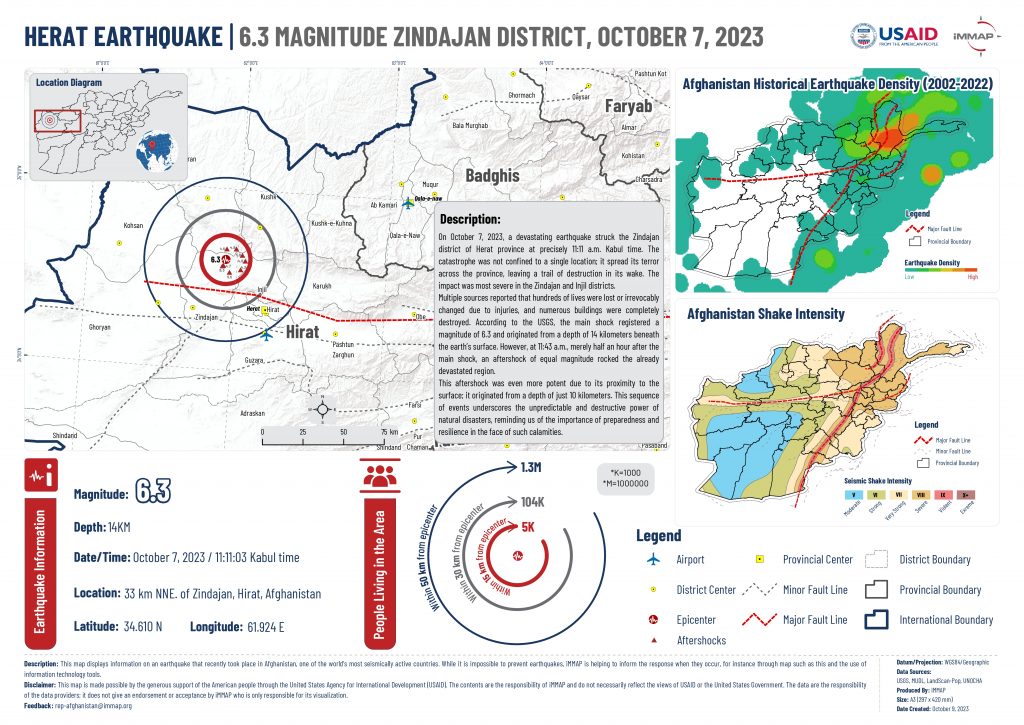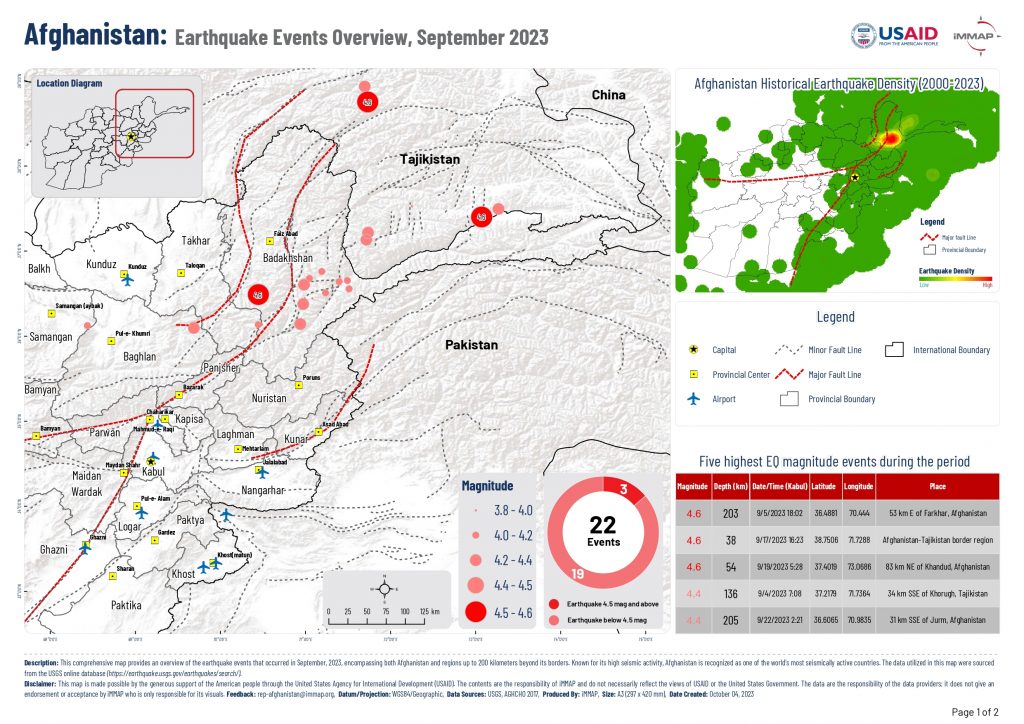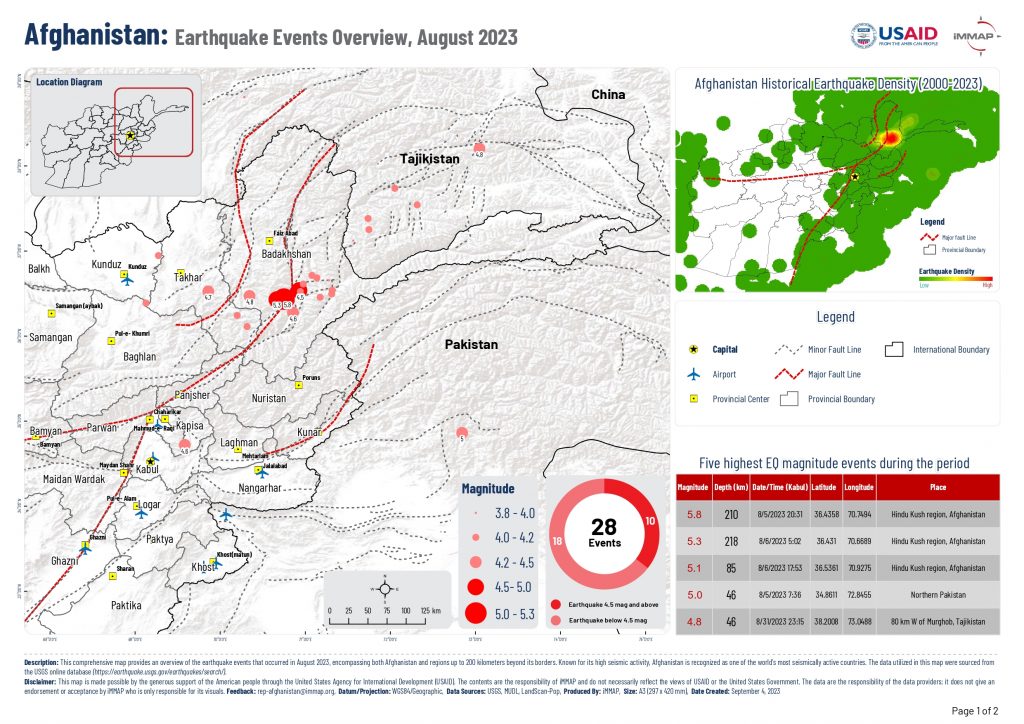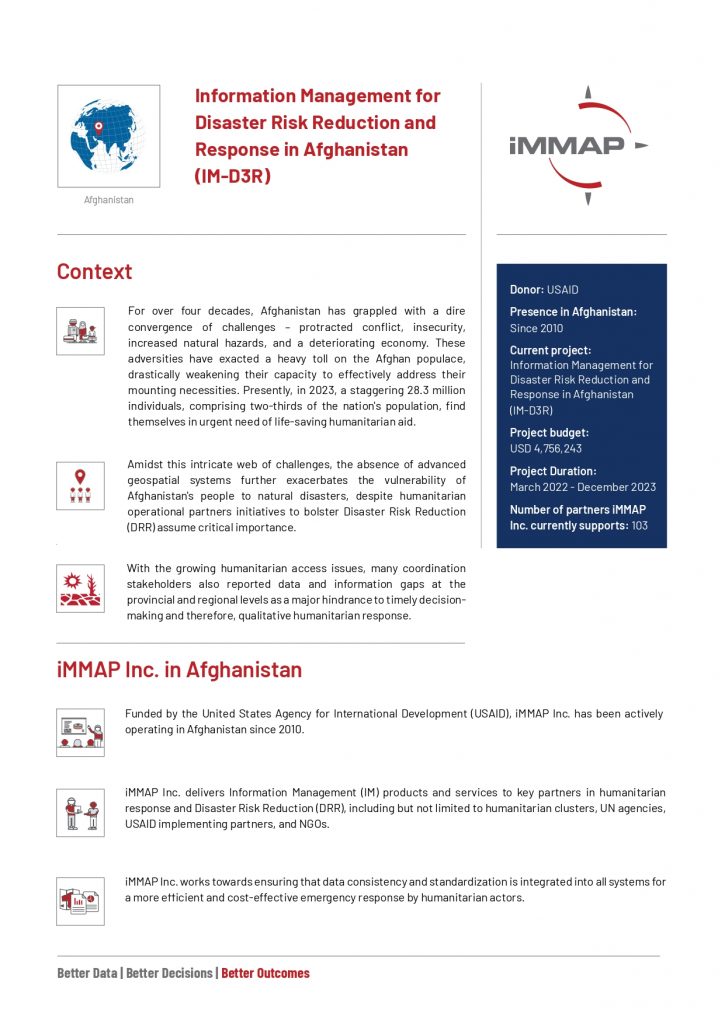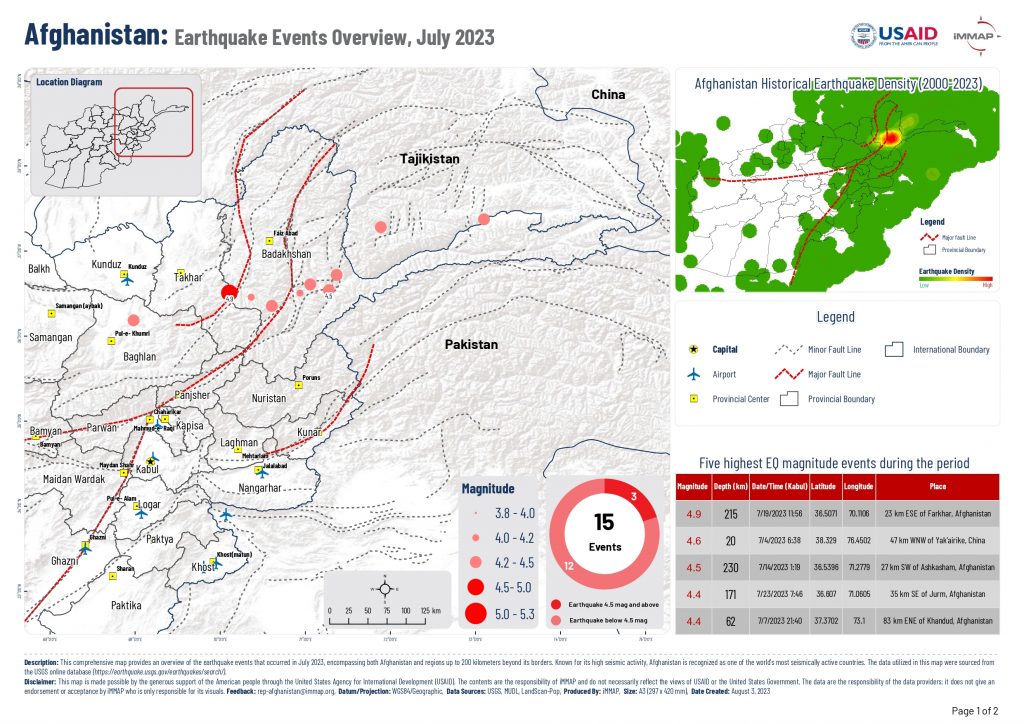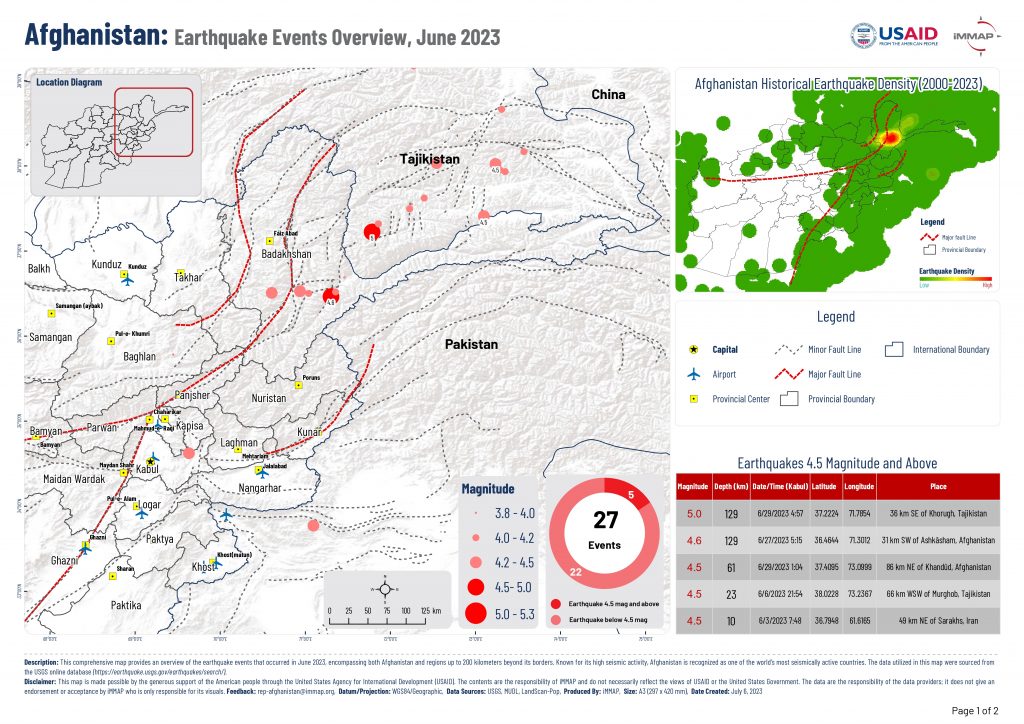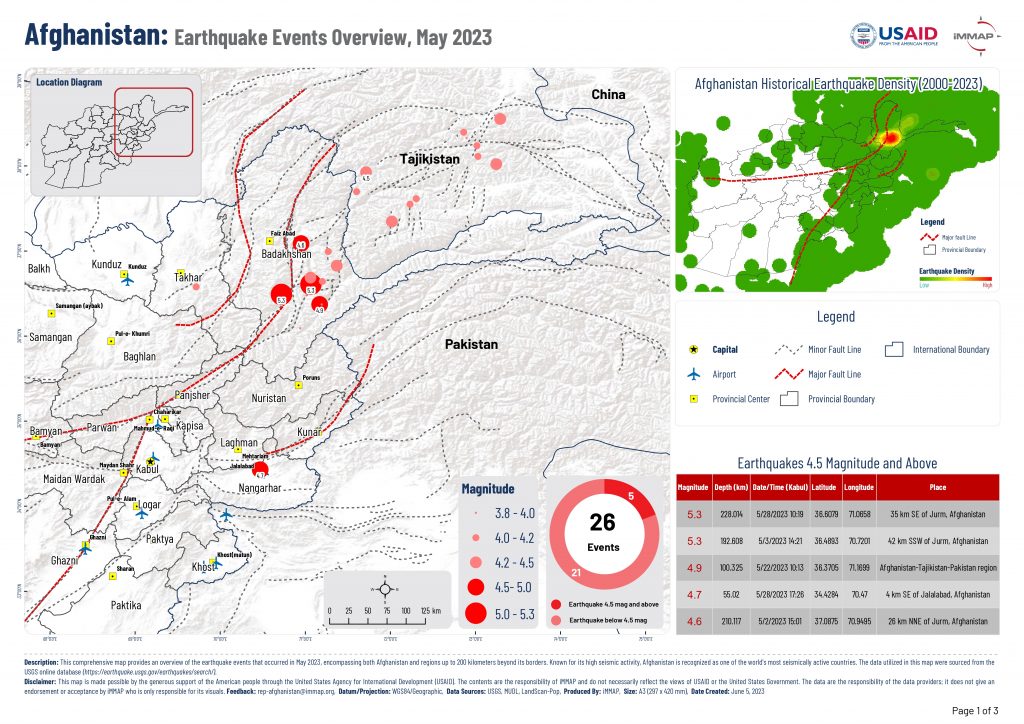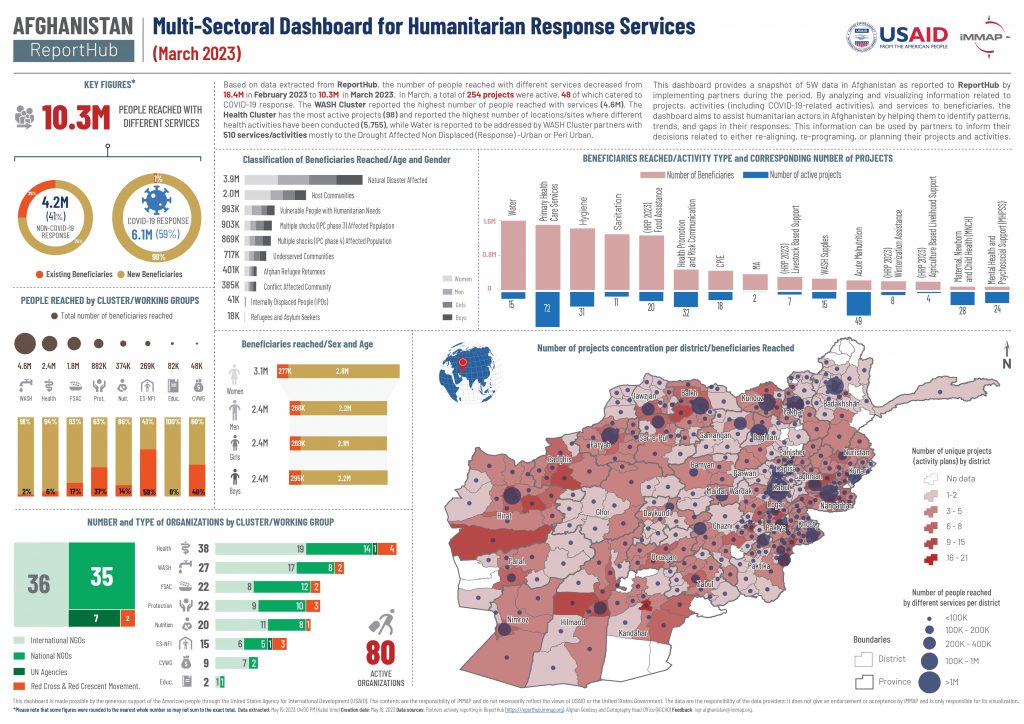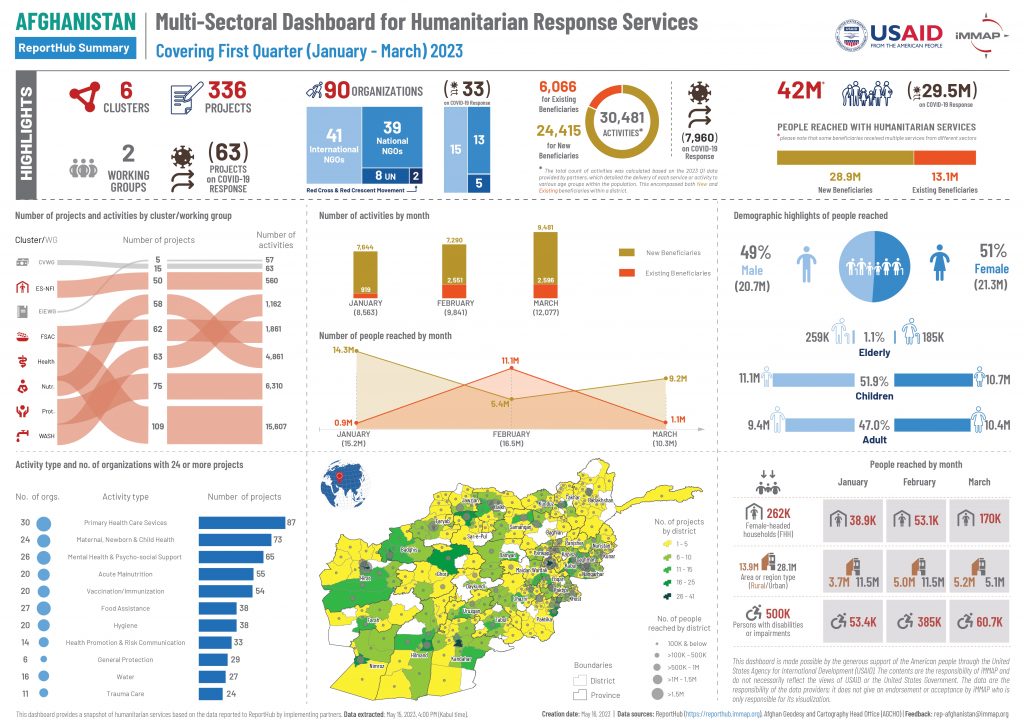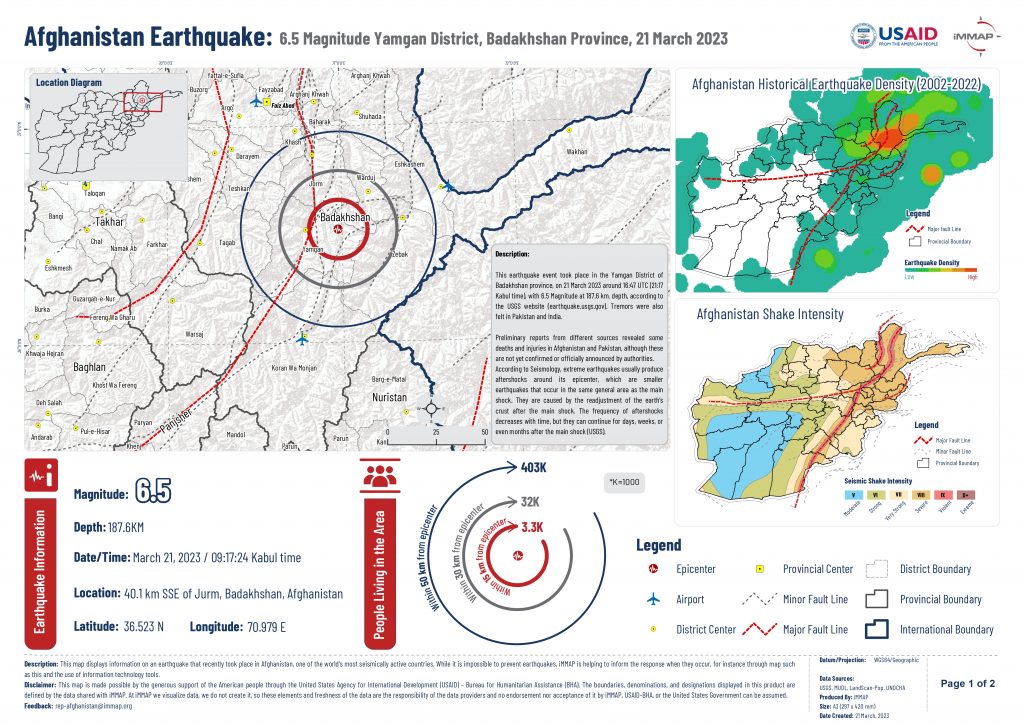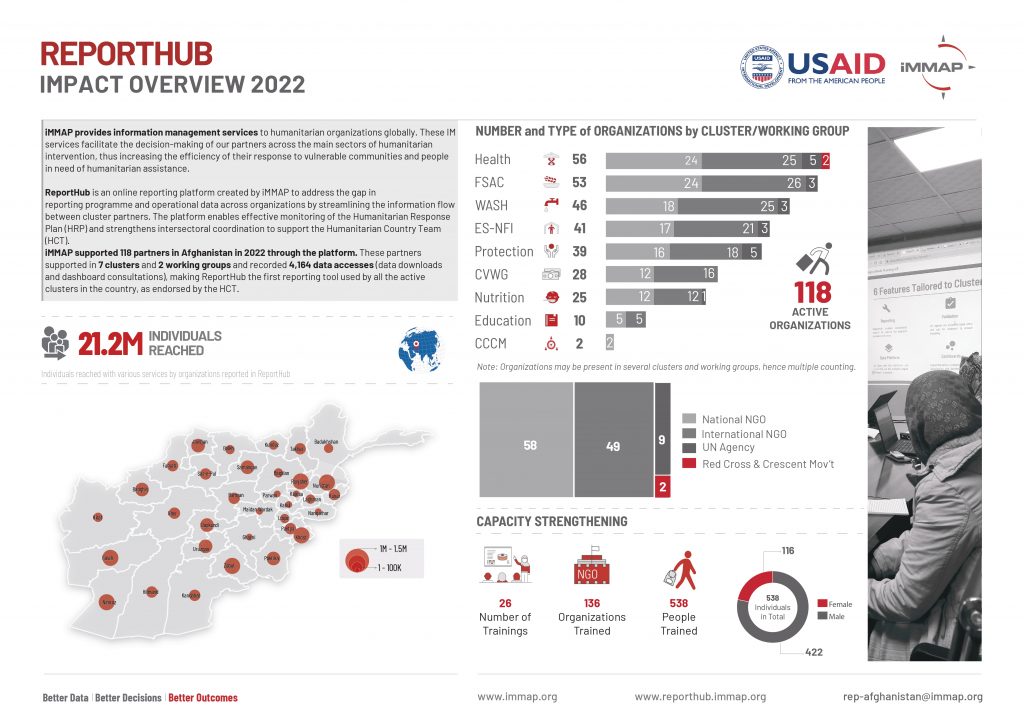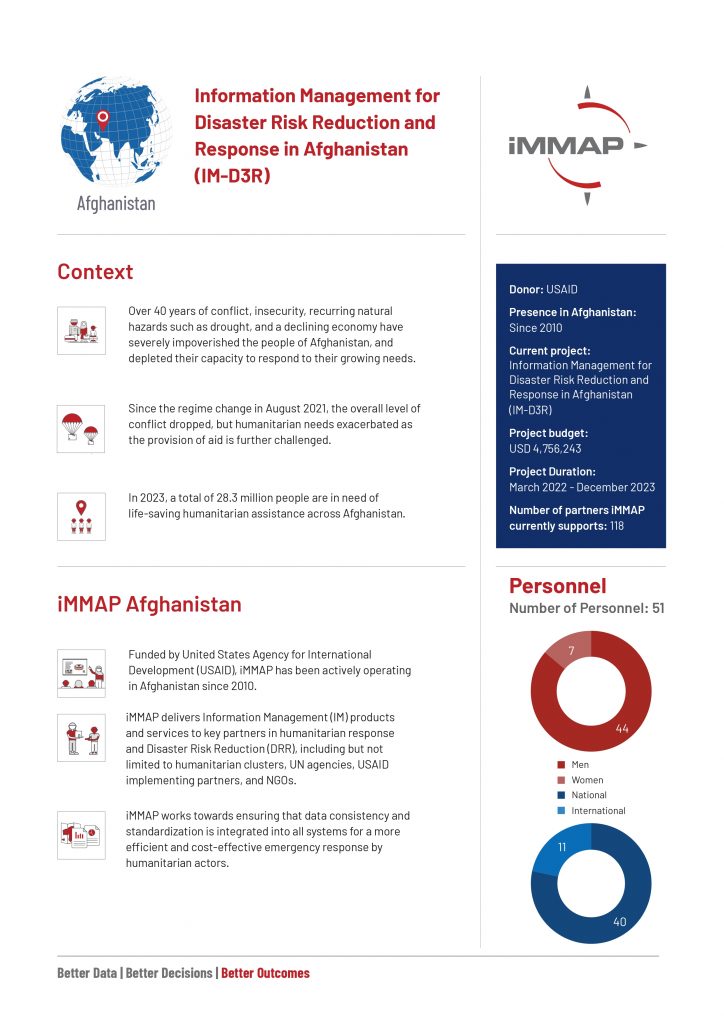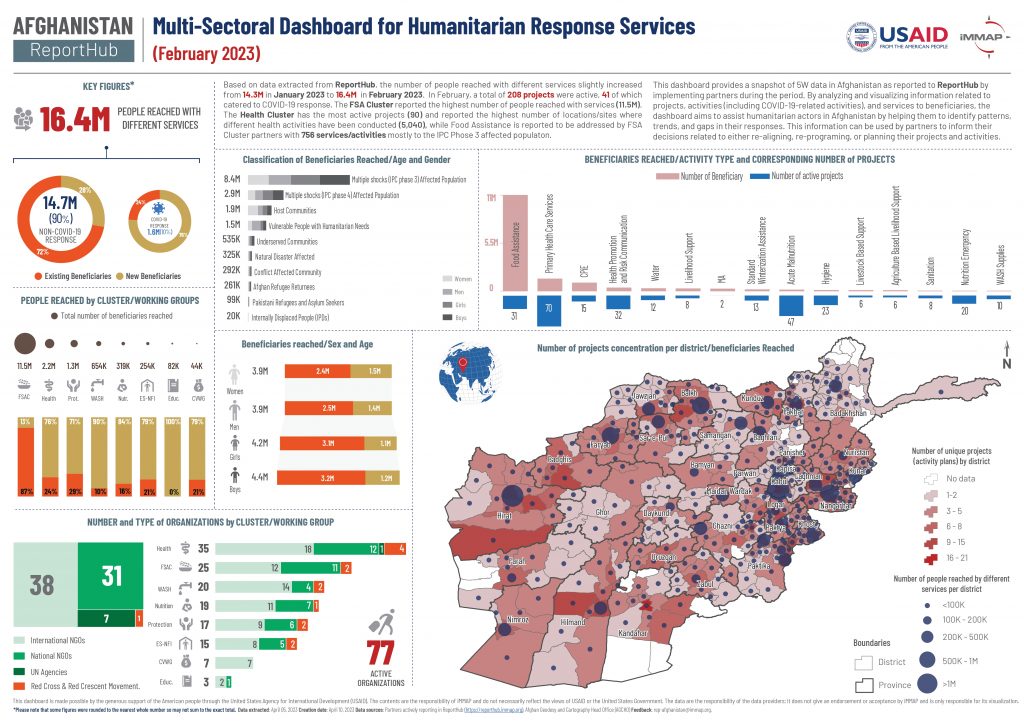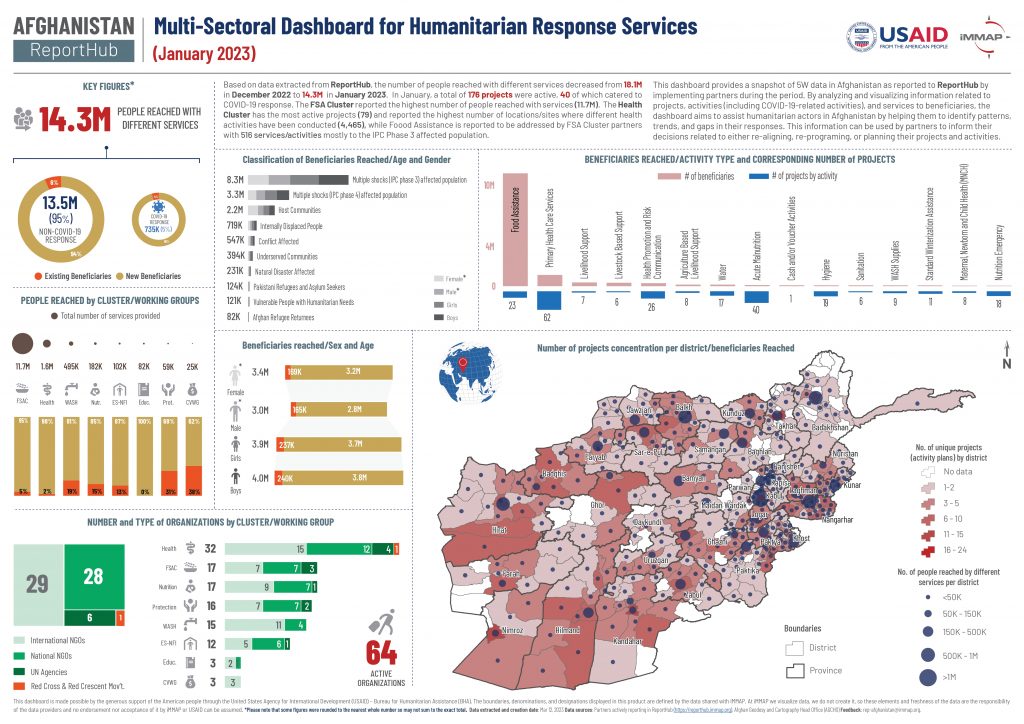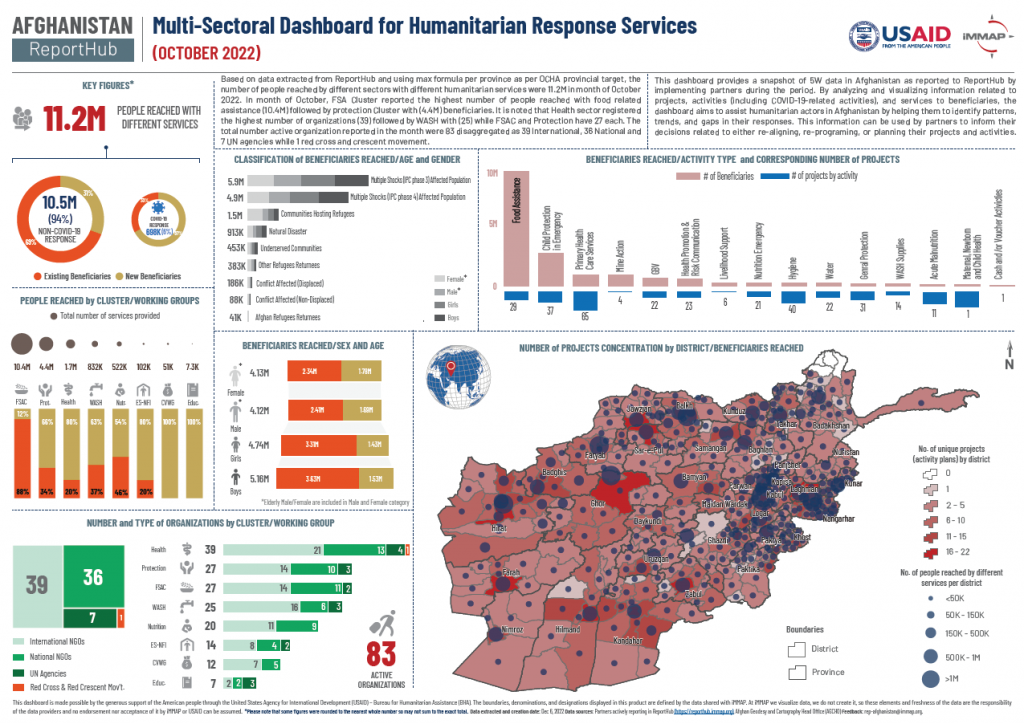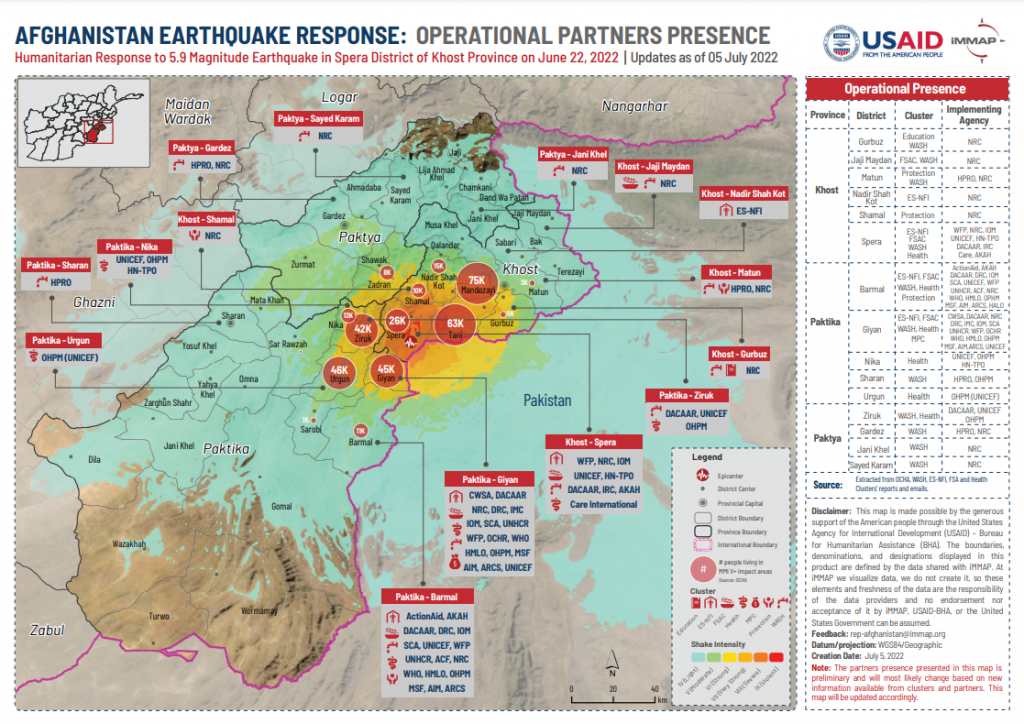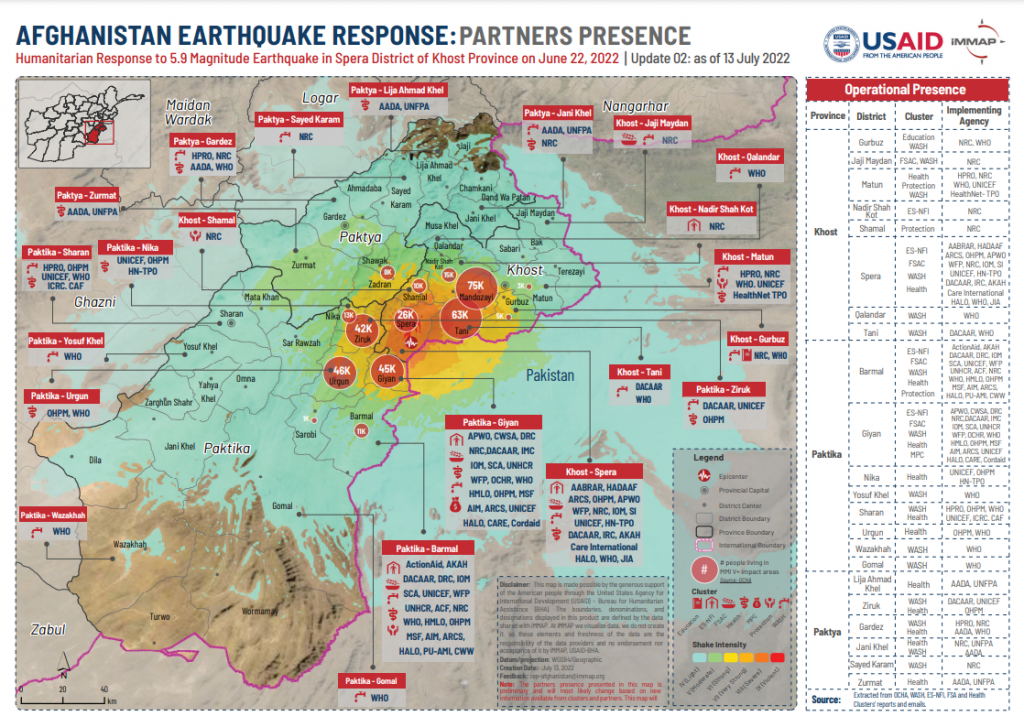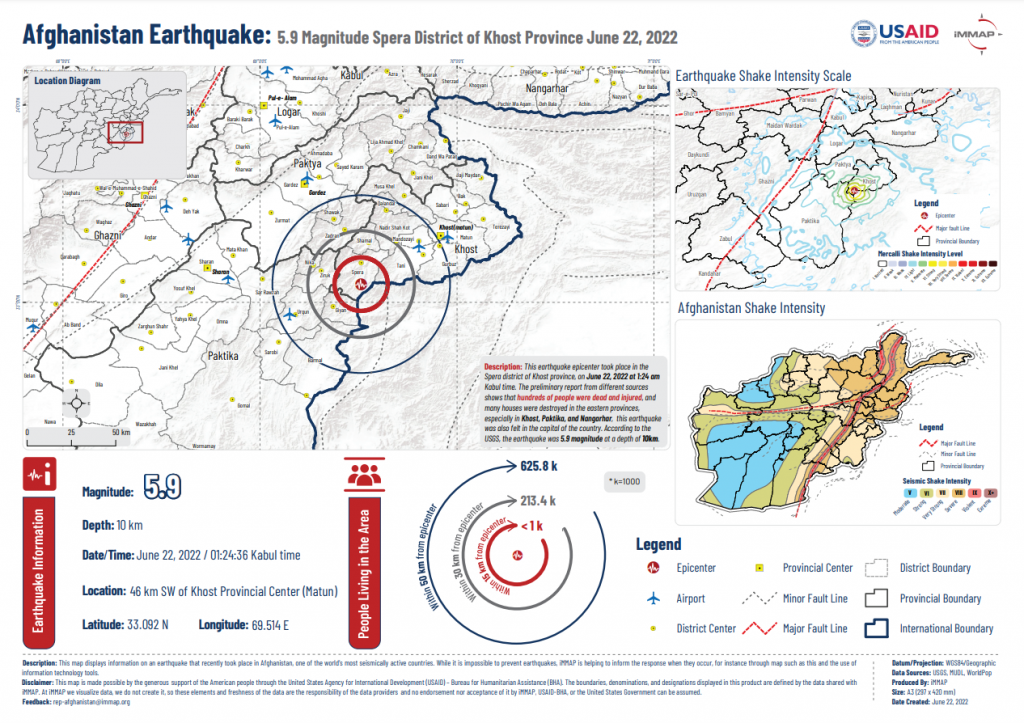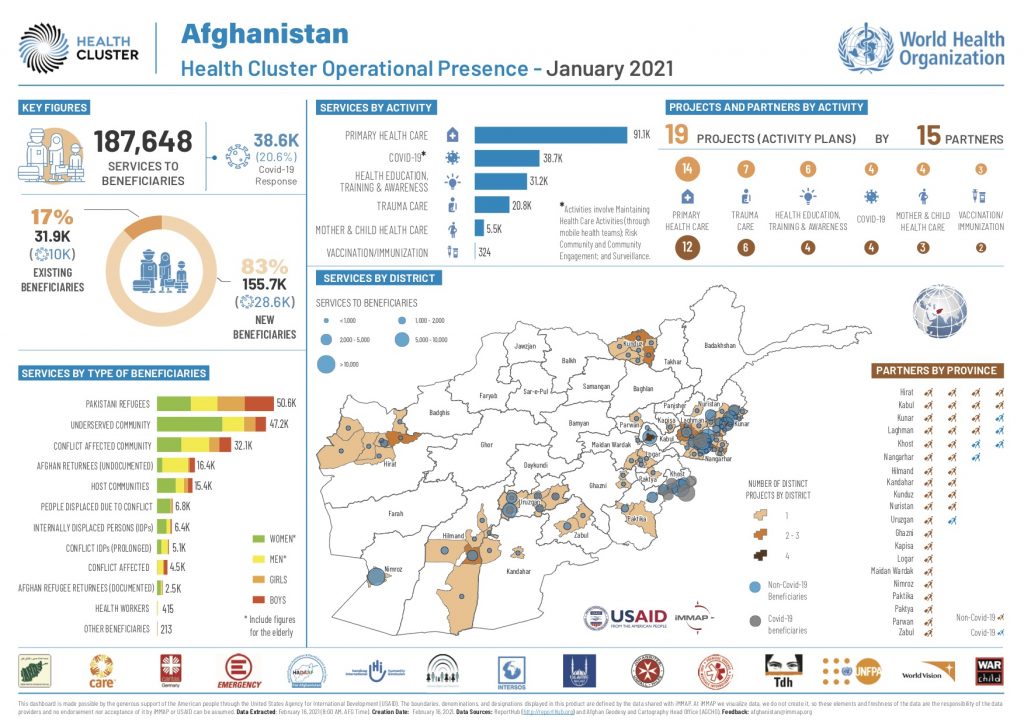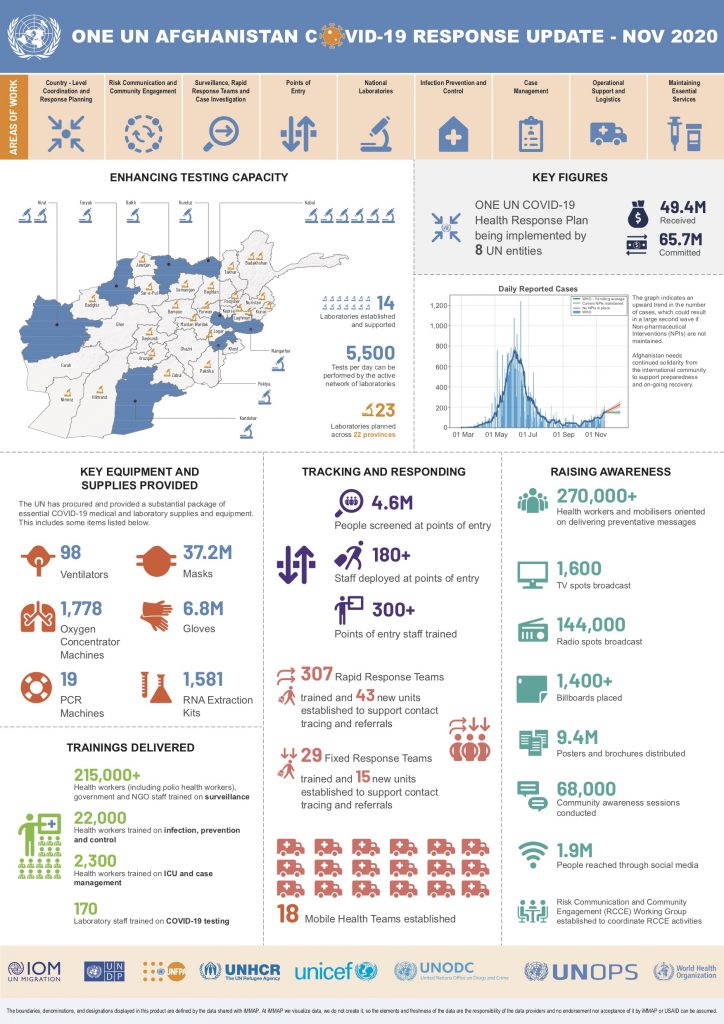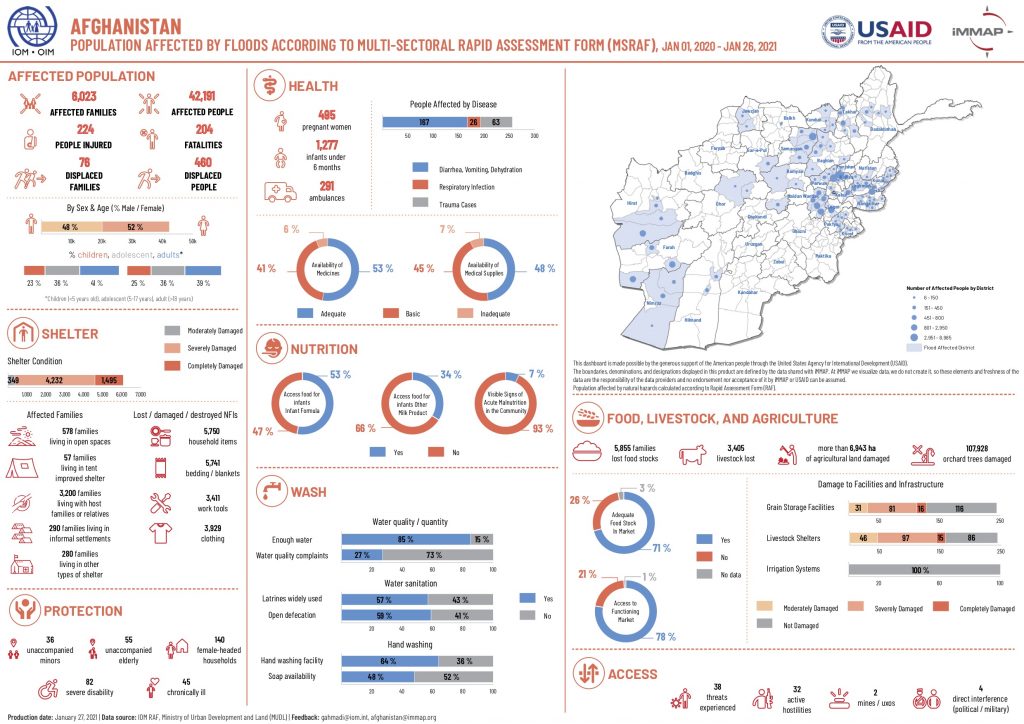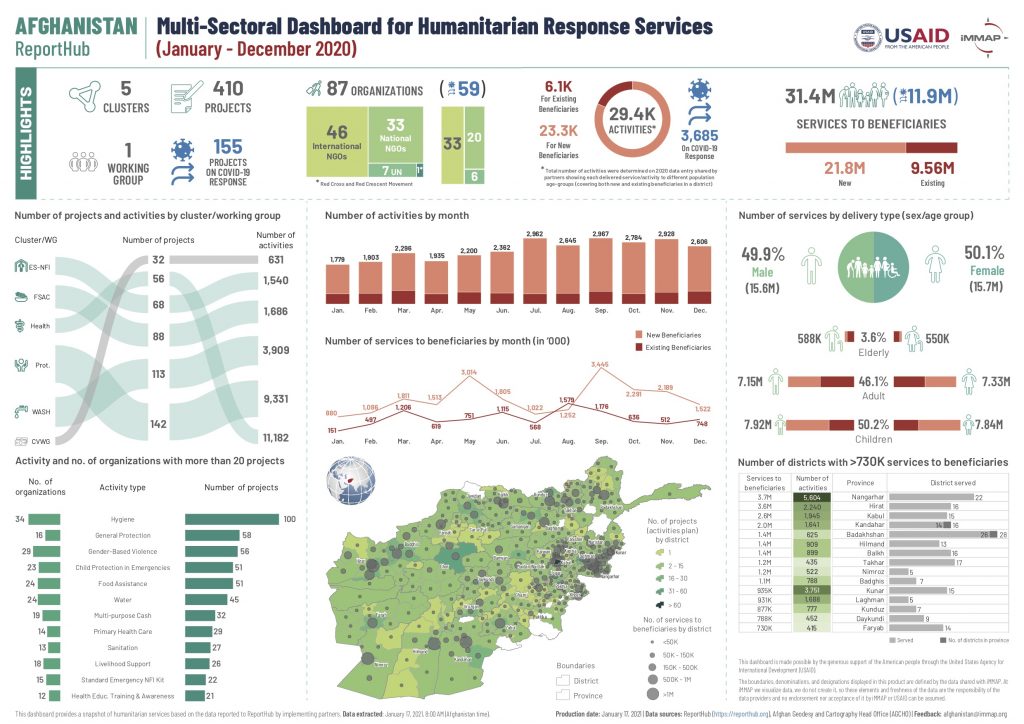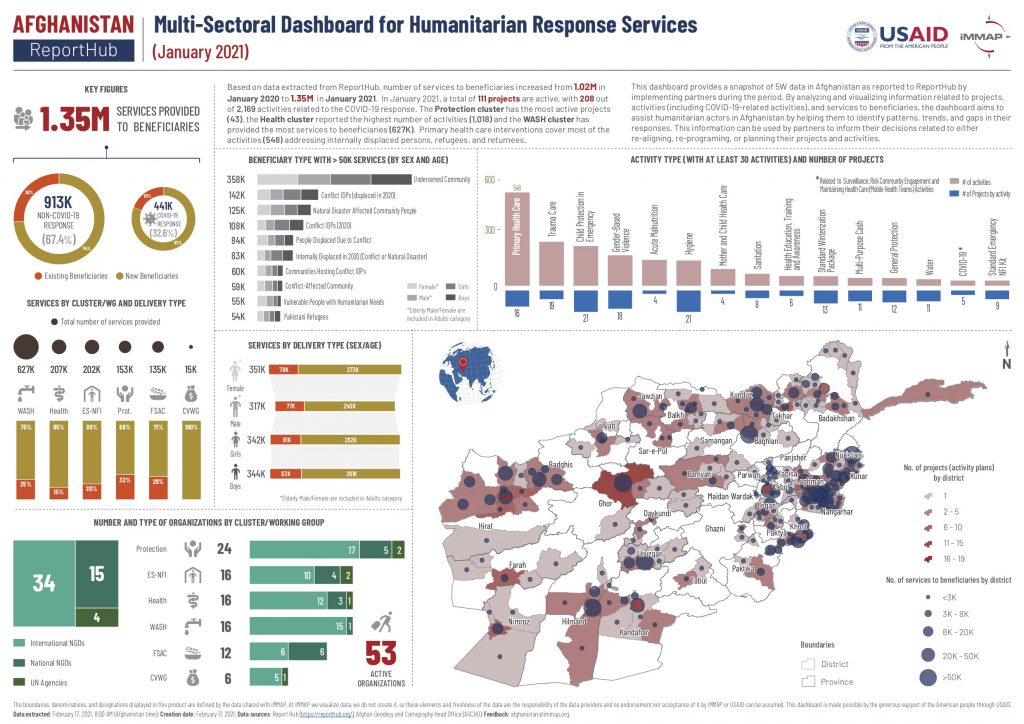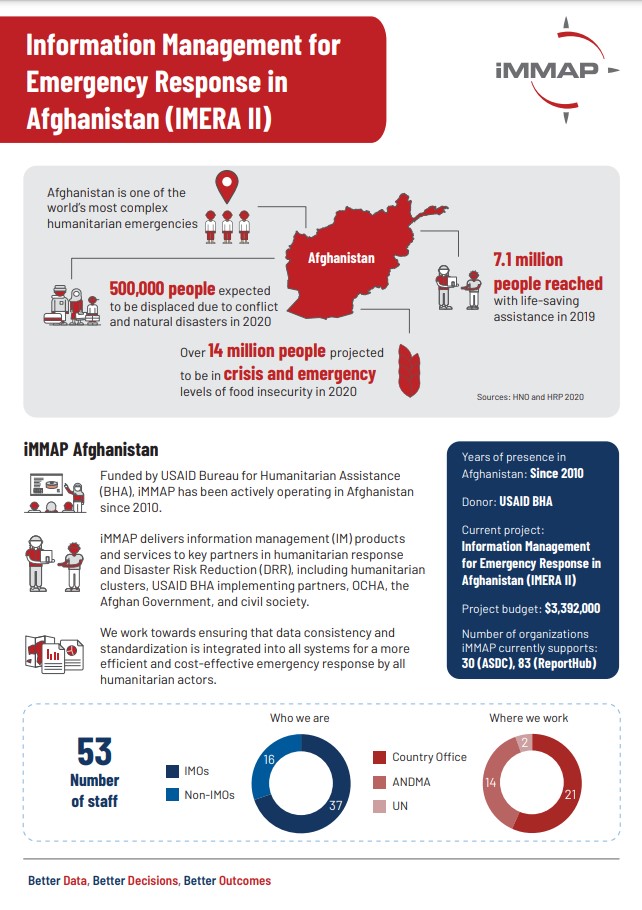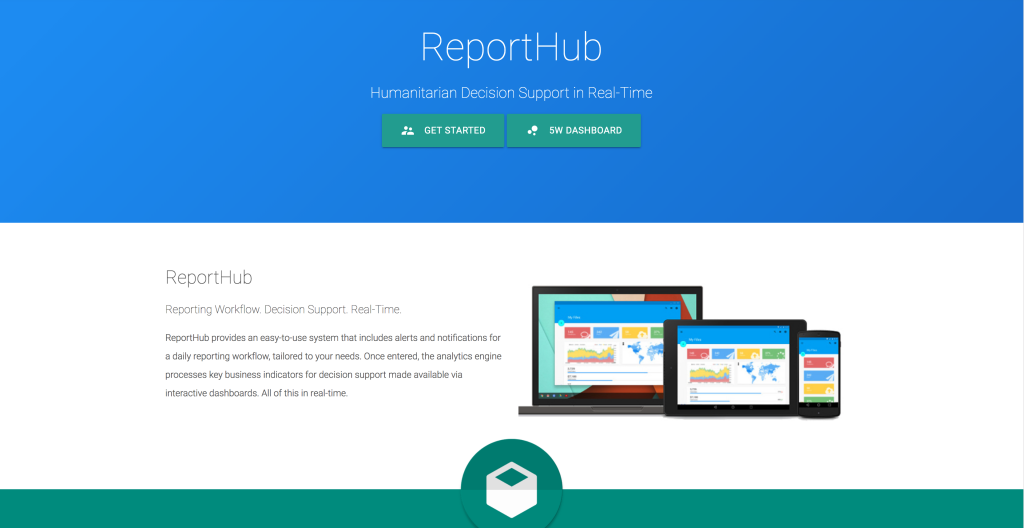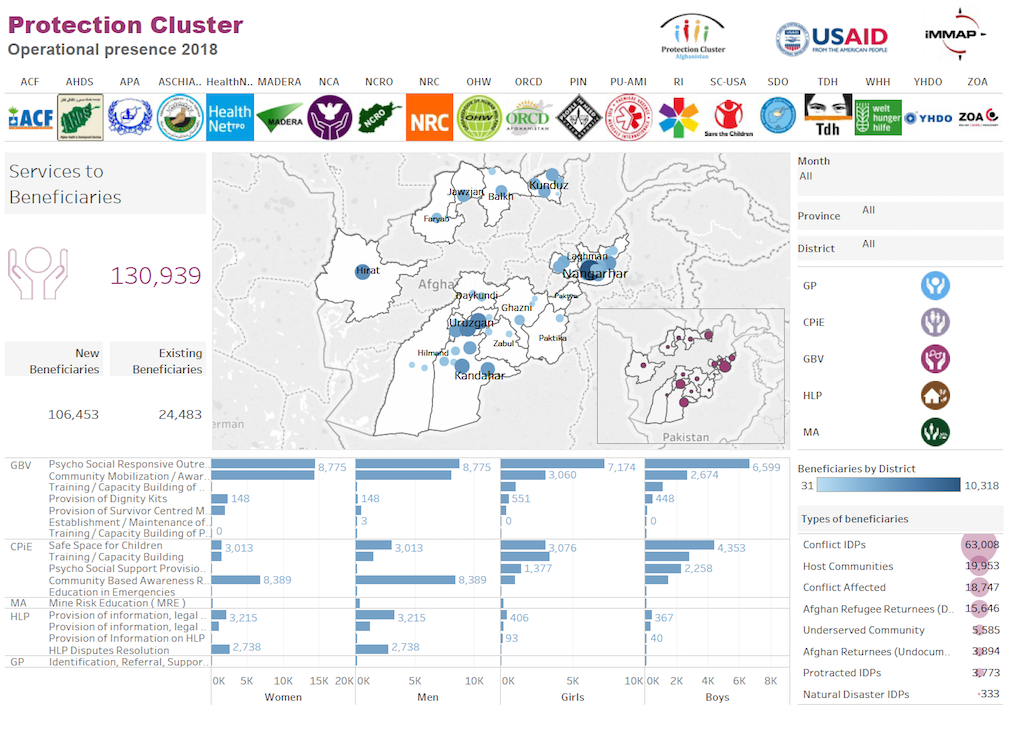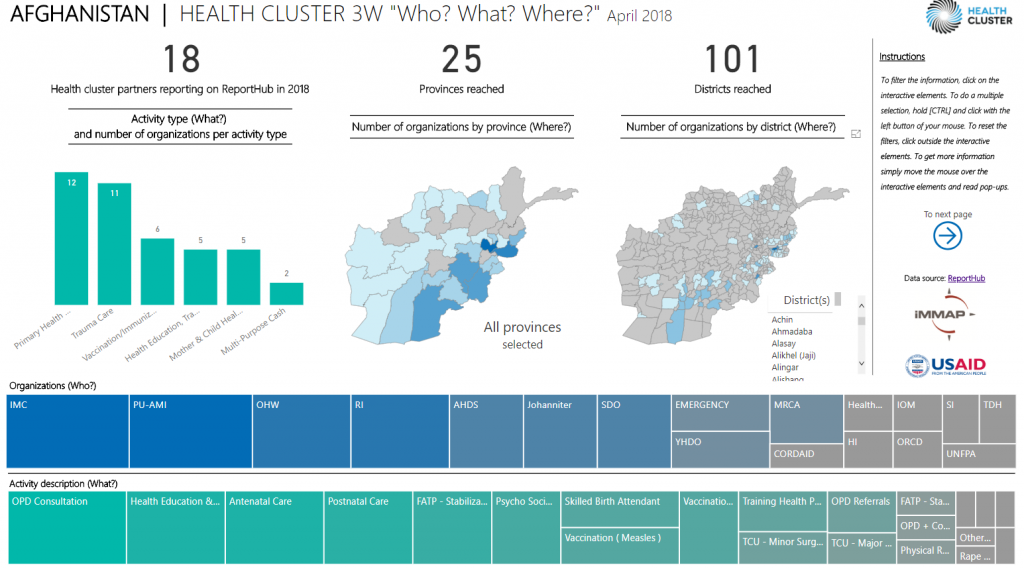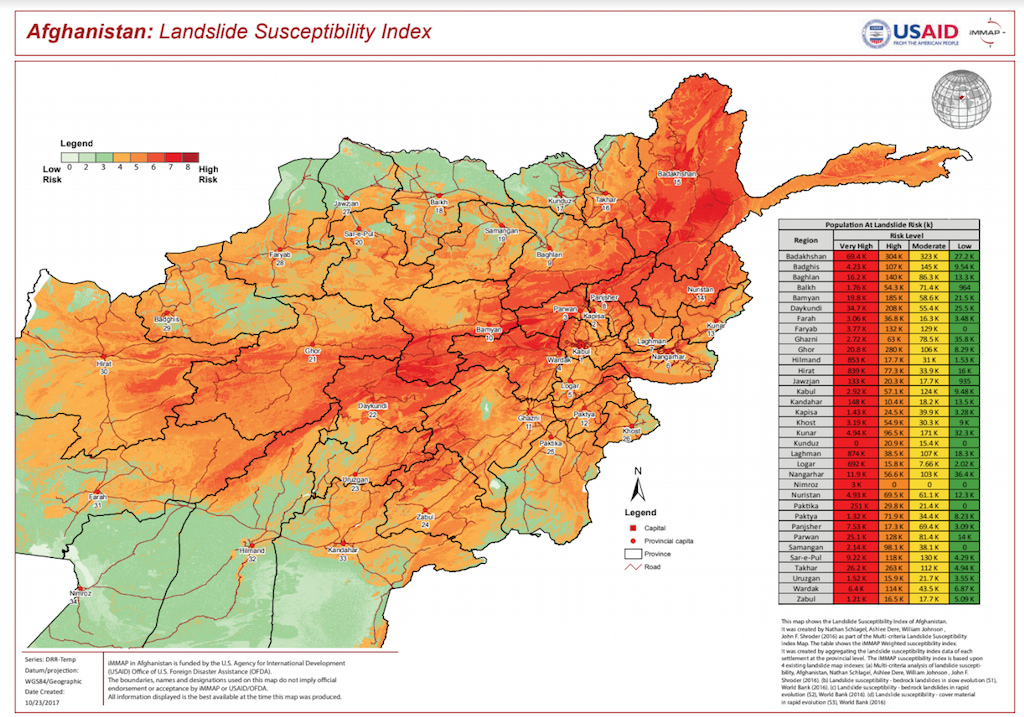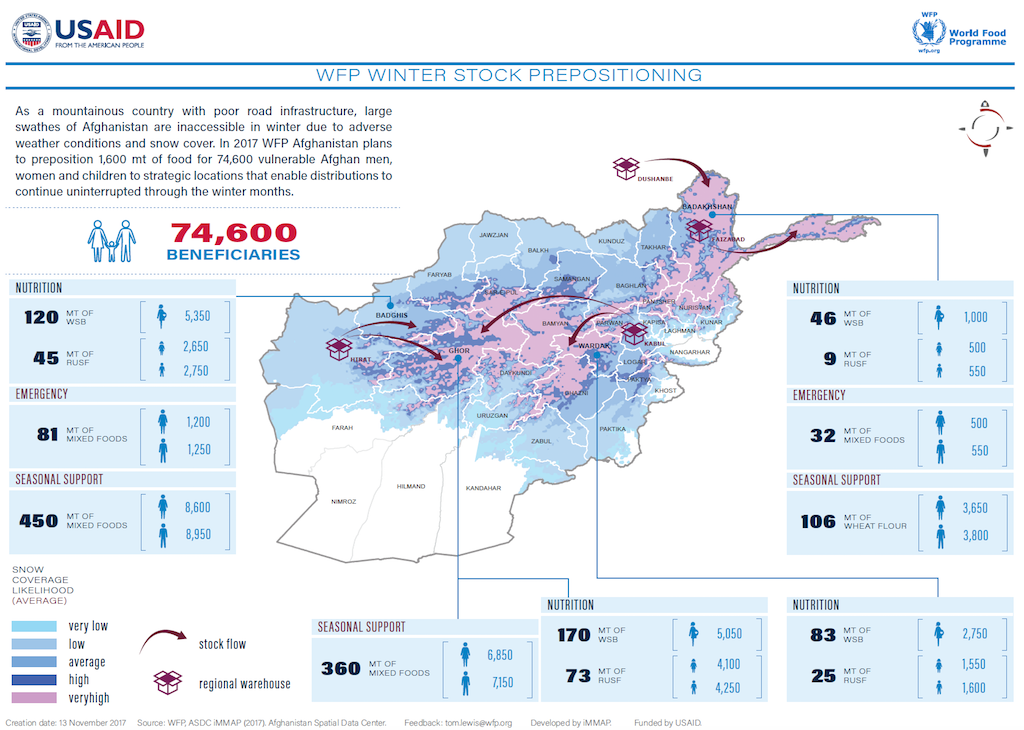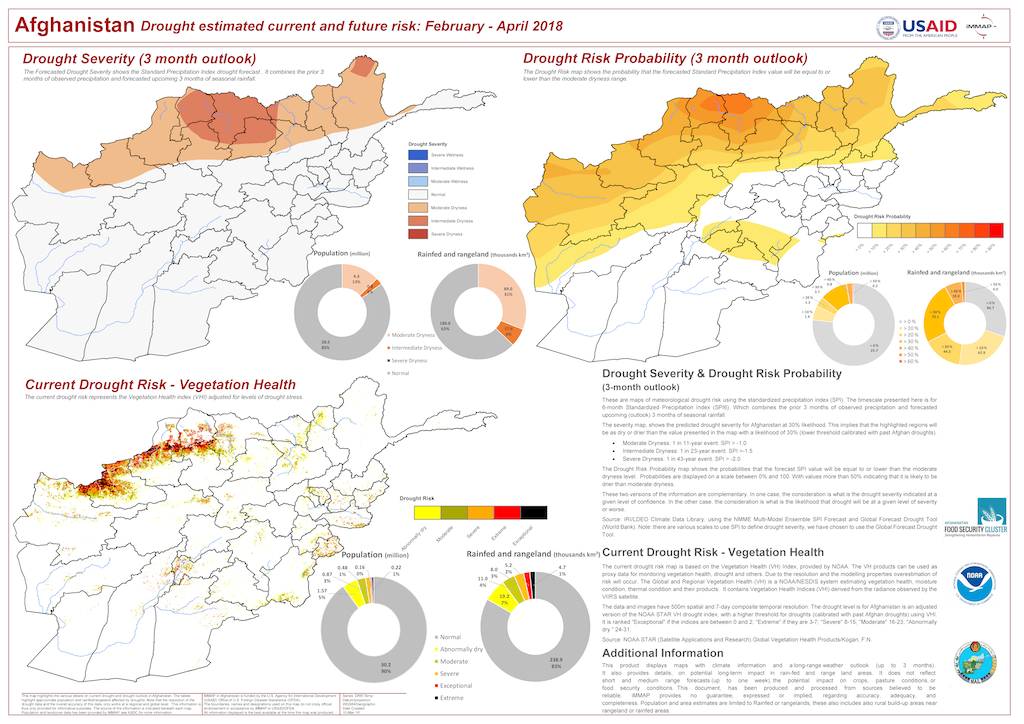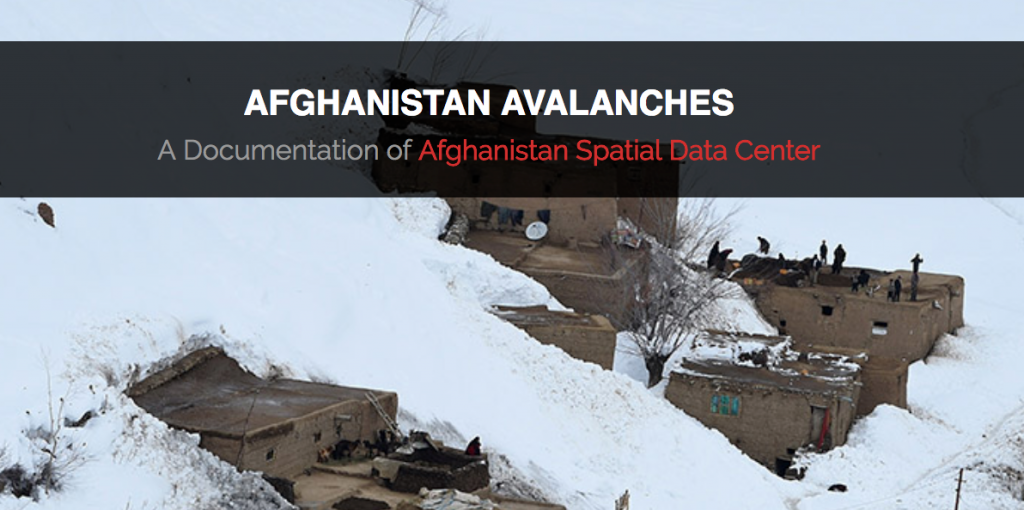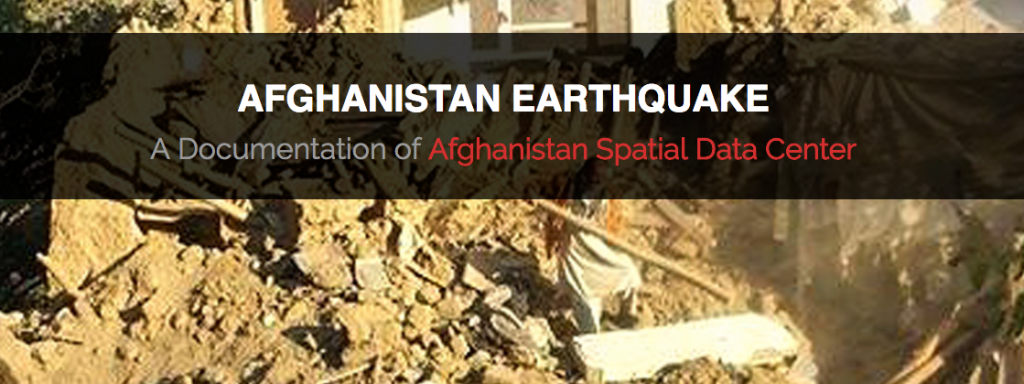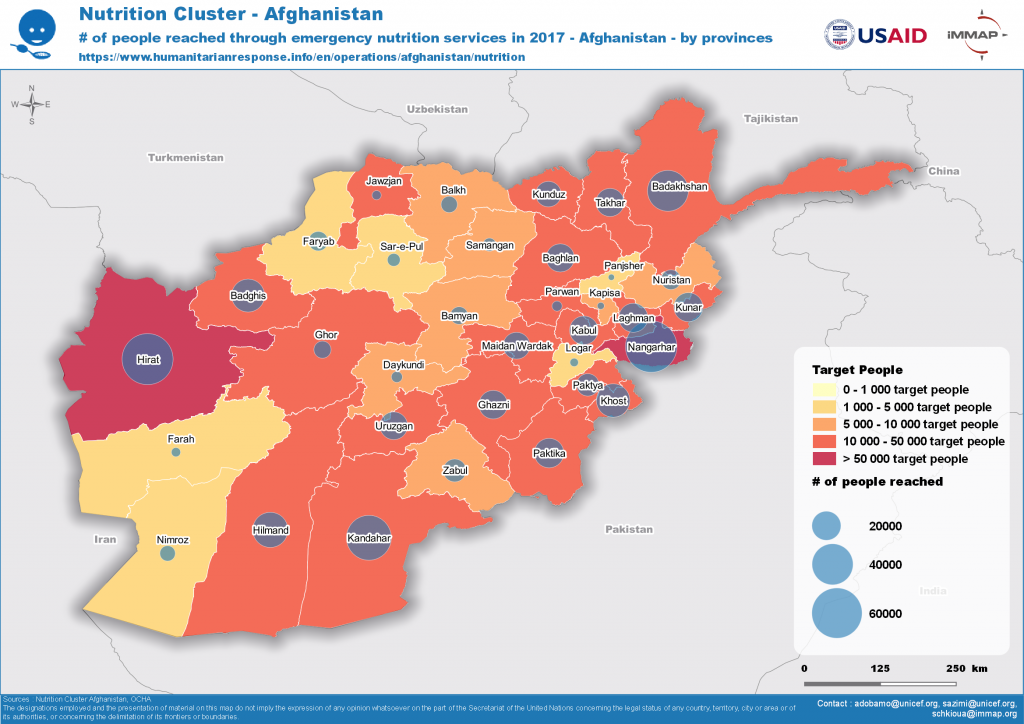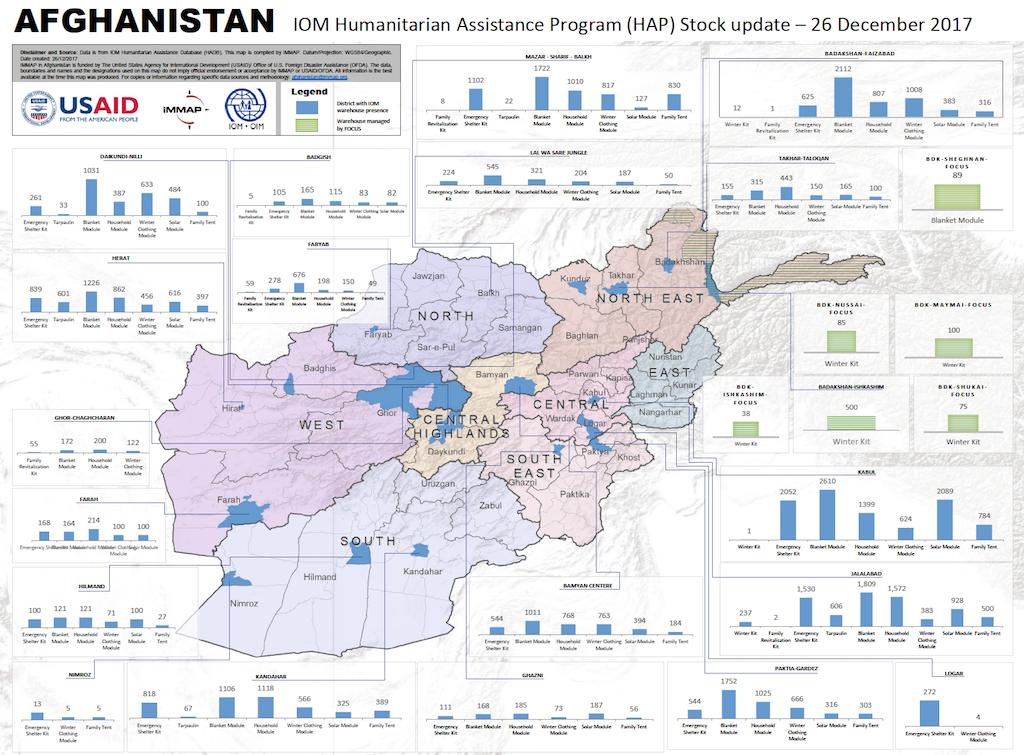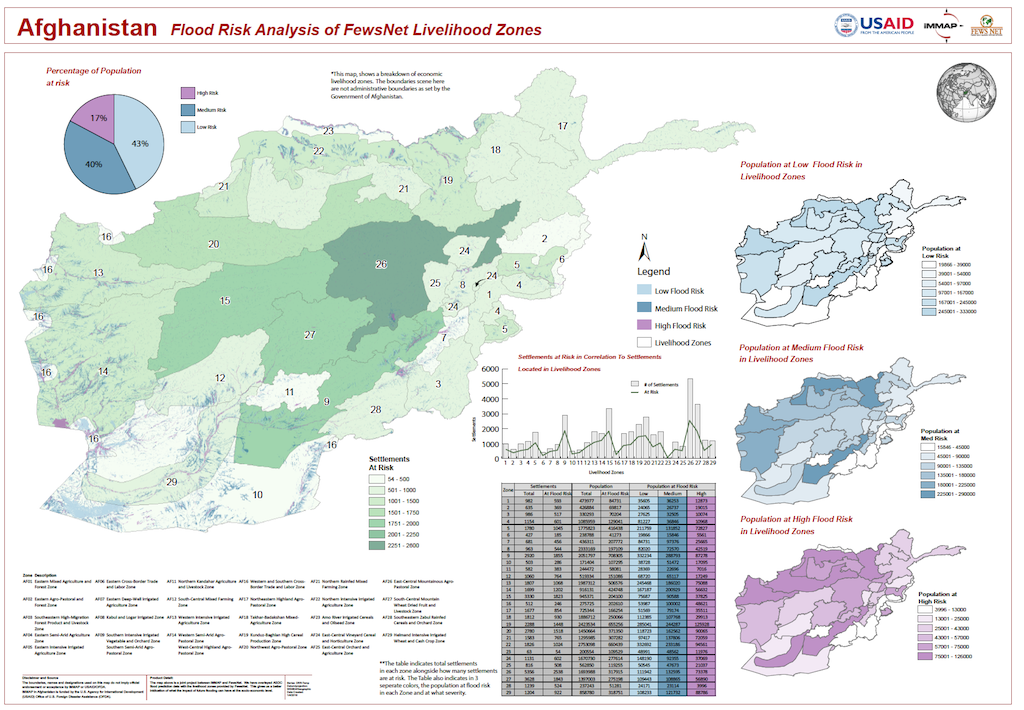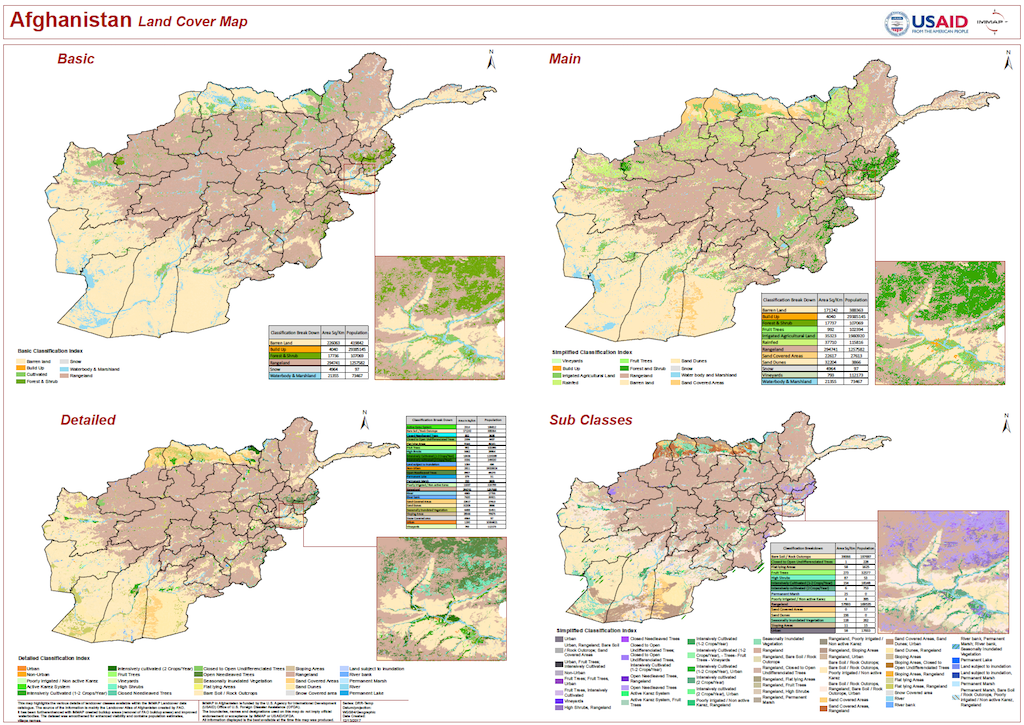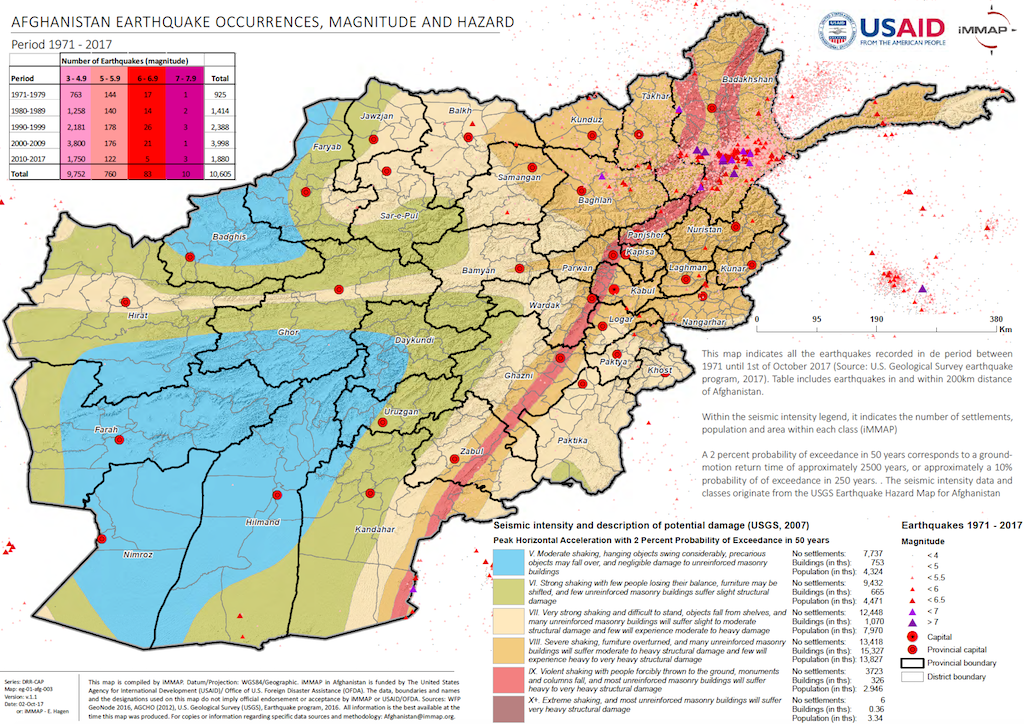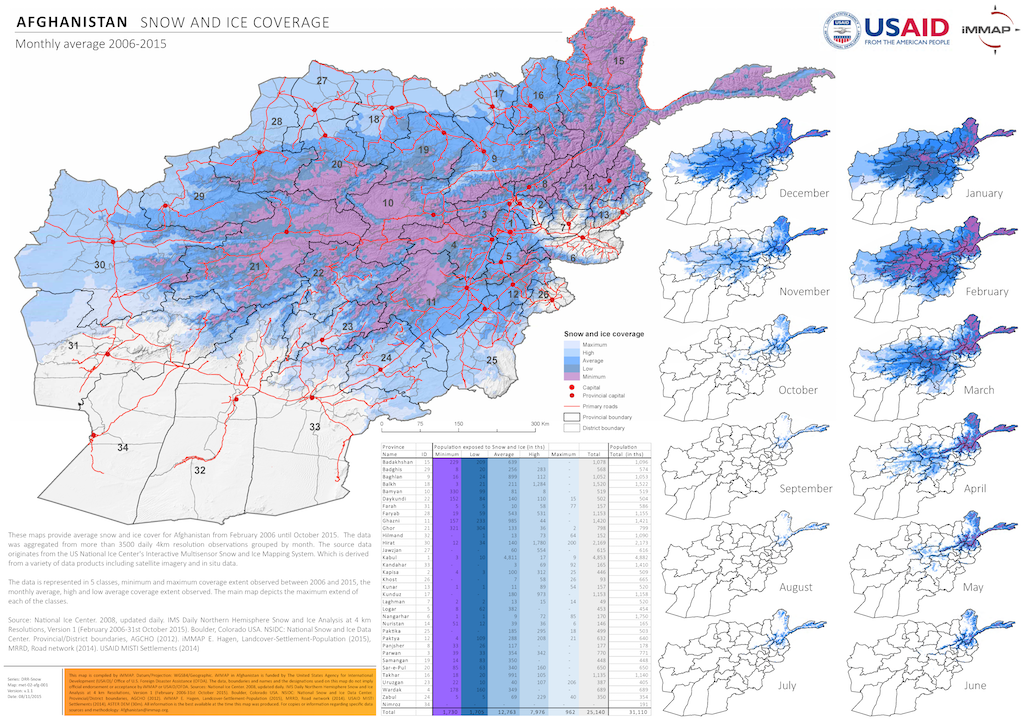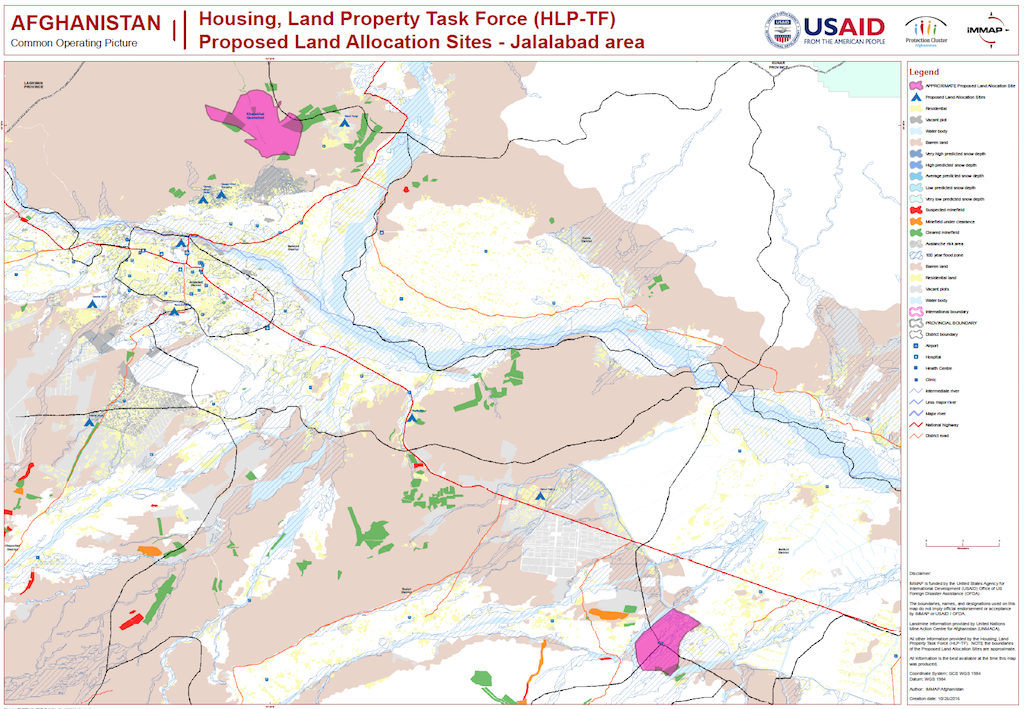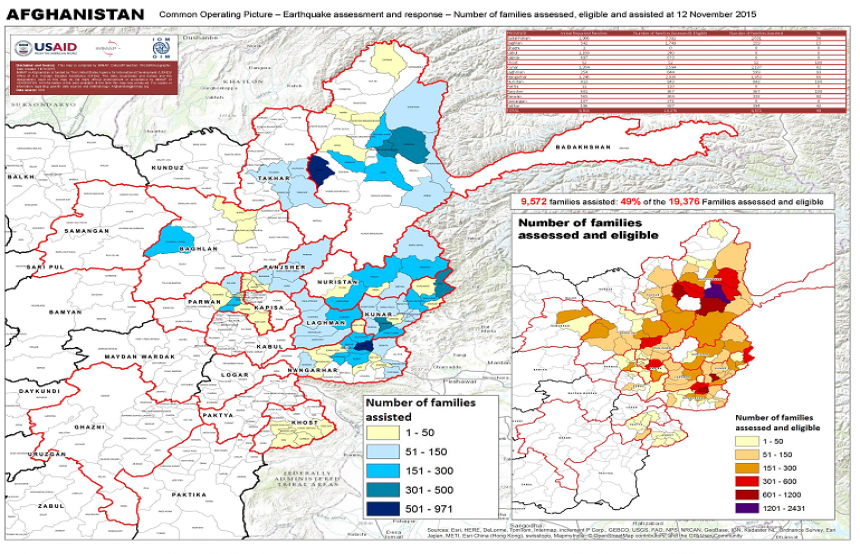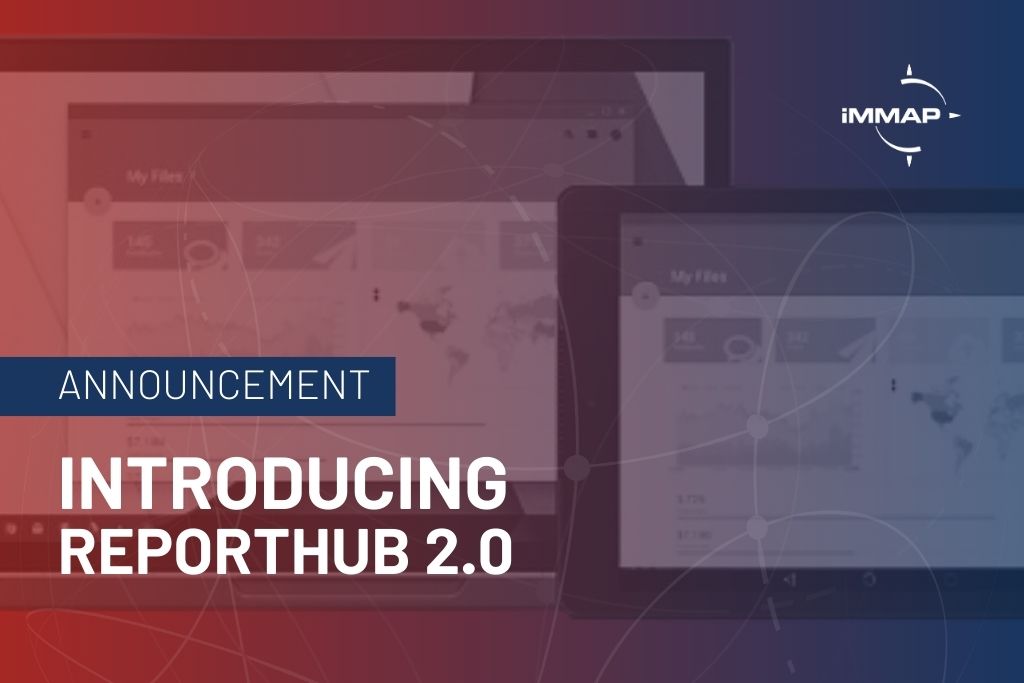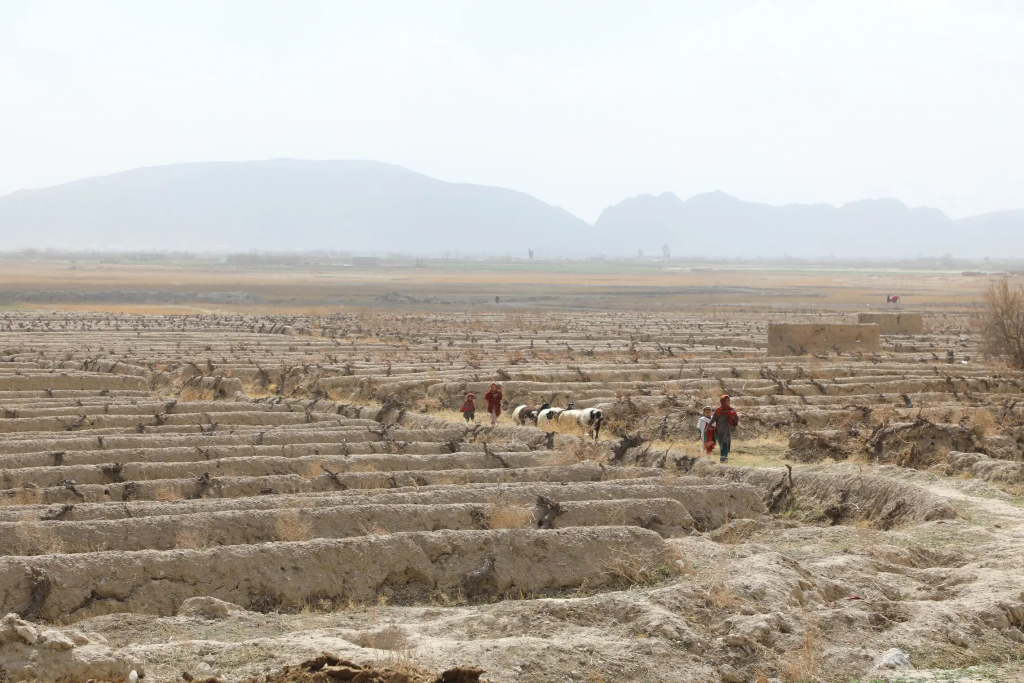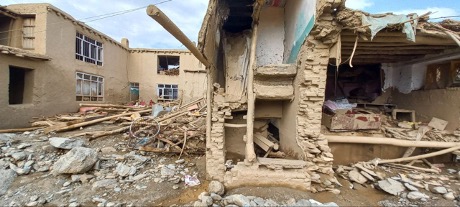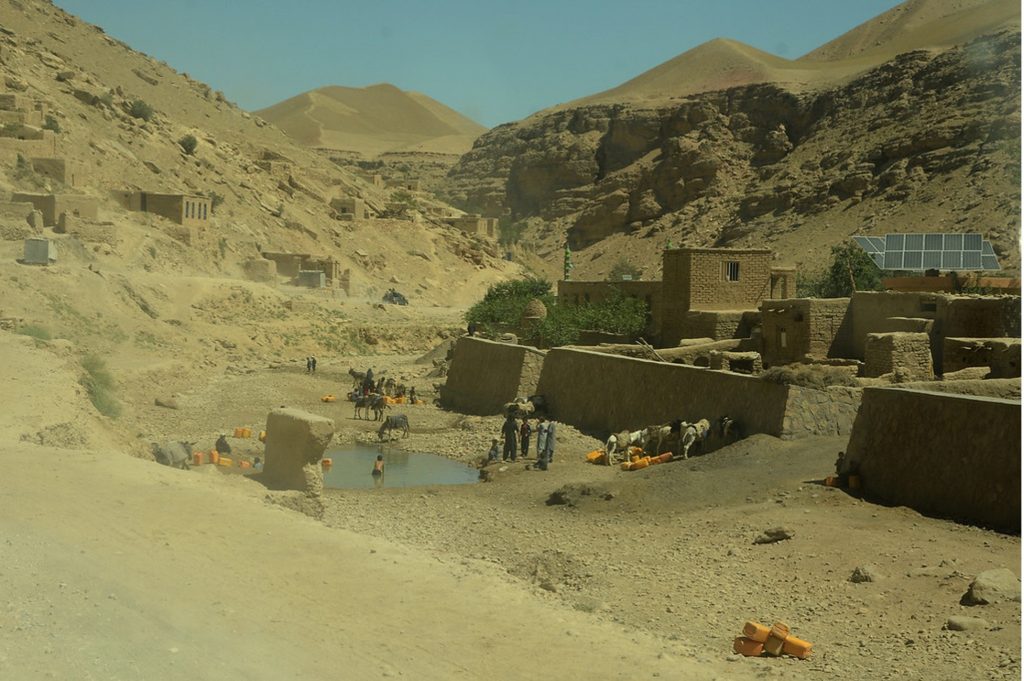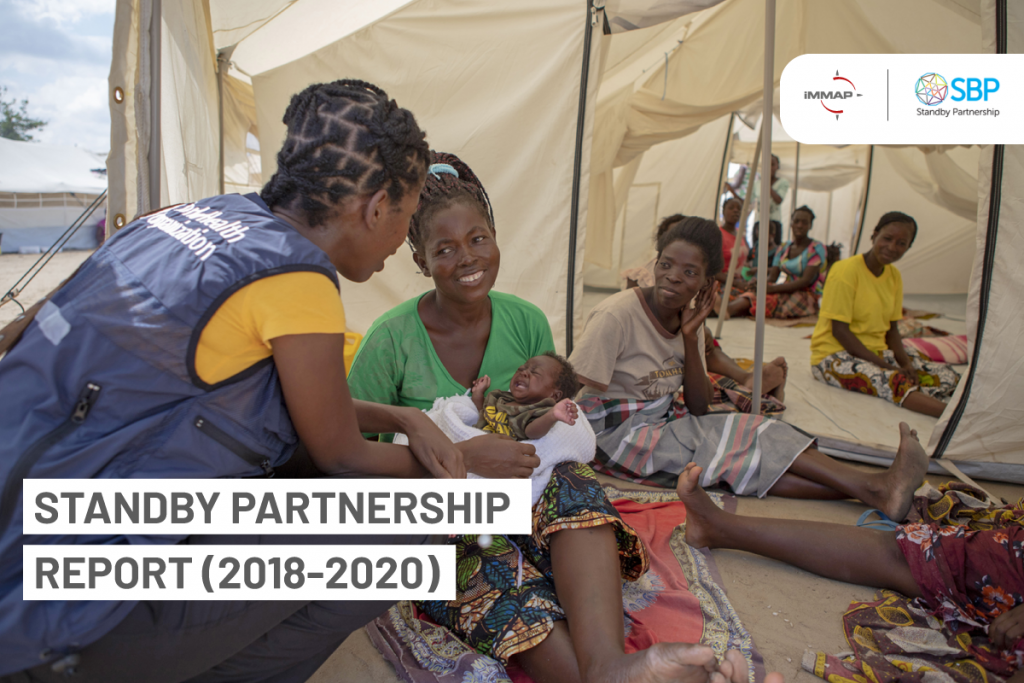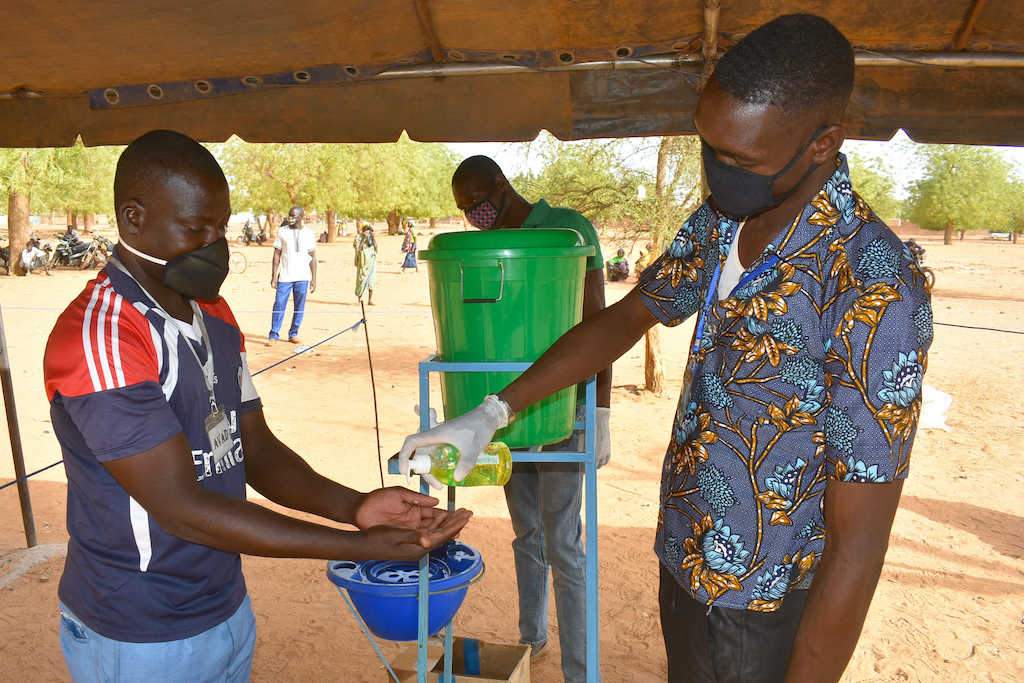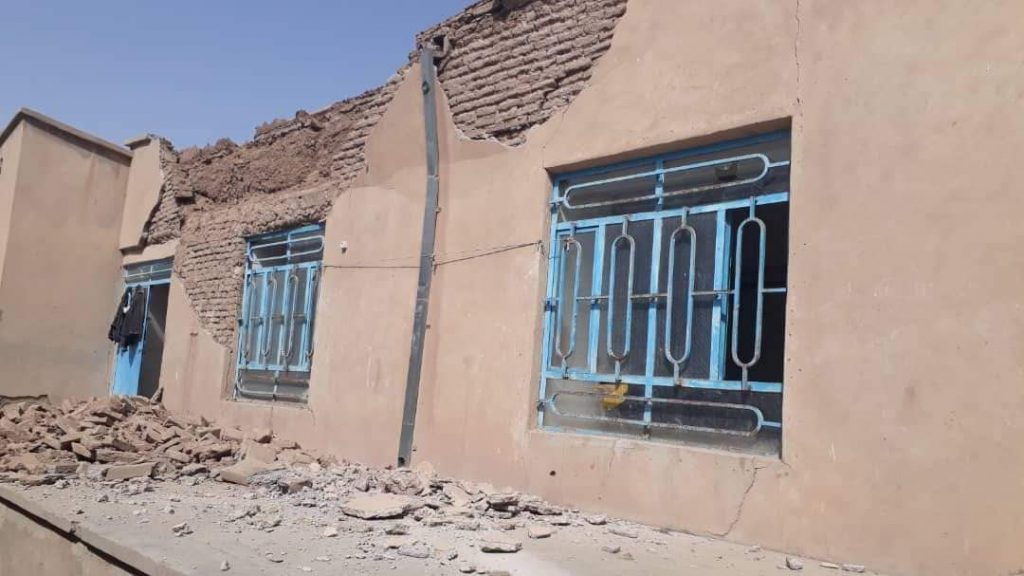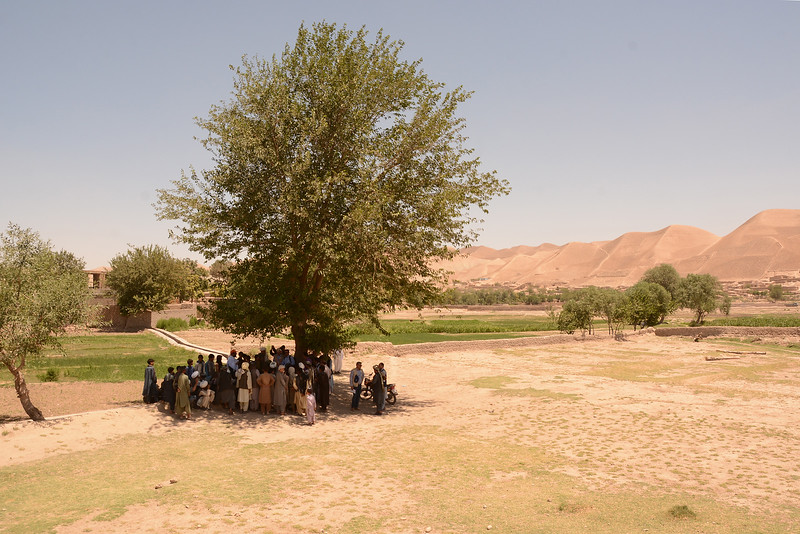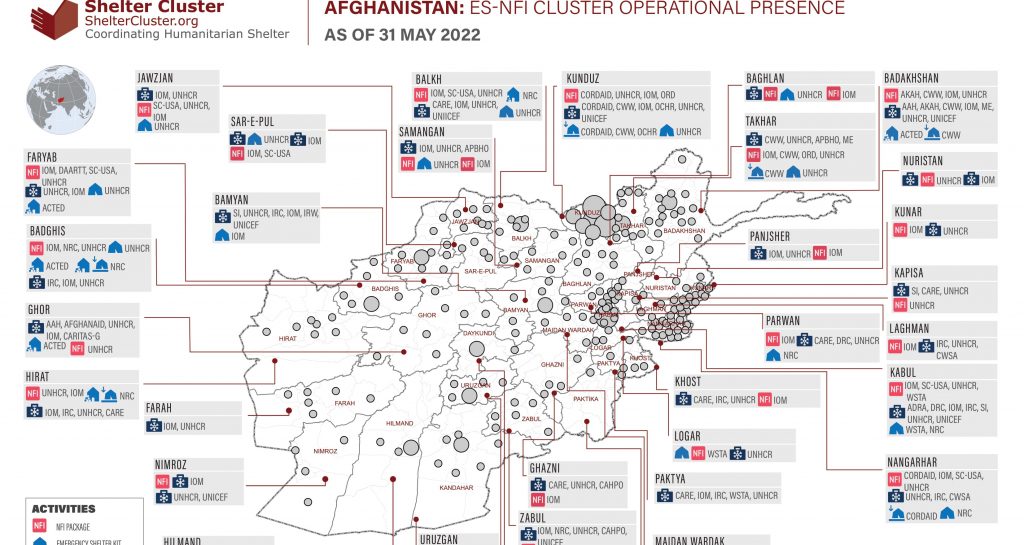Through the IM-D3R project, iMMAP Inc., with the support of USAID, is assisting the humanitarian community in Afghanistan by providing accurate, relevant, and timely information to inform disaster risk reduction (DRR) efforts and improve the impact of the humanitarian response in the country. The IM-D3R project allows iMMAP Inc. to demonstrate its commitment to empowering humanitarian stakeholders and national capacities in Afghanistan to reach a professional understanding of the principles and best practices of IM in DRR and humanitarian contexts.
This includes lending our expertise in capacity development, knowledge management, implementation mechanisms, and other key activities for humanitarian information management (IM) and coordination, to address the gap in IM and analysis. iMMAP Inc. also closely liaises with the United Nations Office for the Coordination of Humanitarian Affairs (OCHA) to ensure that the Humanitarian Response Plan (HRP) and cluster-specific reporting requirements are met and provides IM support to the humanitarian clusters for specialized tasks from our in-country program team. iMMAP Inc. is recognized as a leading organization in the innovation of IM and geospatial services and continues to advocate for information sharing in DRR.
iMMAP Inc. produces a range of static and interactive IM products such as maps, dashboards, spatial platforms, and reporting systems. These products assist our partners in mapping their presence and activities, also managing and visualizing essential information for their programs.
We offer humanitarian coordination and reporting support through ReportHub, an online reporting platform developed by iMMAP Inc. to address the gap in reporting operational data across organizations. The platform also functions to streamline the information flow between clusters, partners, and the Humanitarian Country Team (HCT) in support of the HRP. ReportHub is currently the main reporting tool used by the humanitarian clusters, sub-clusters, and working groups active in the country, as endorsed by the HCT.
To facilitate the use of ReportHub, iMMAP Inc.’s capacity strengthening team provides recurrent training and workshops to help the humanitarian professionals working in Afghanistan to better respond to the ongoing humanitarian situation in the country by contributing to the Humanitarian Programme Cycle (HPC) via reporting their response activity reports.
The Humanitarian Spatial Data Center (HSDC) is an advanced web-based geospatial platform developed by iMMAP Inc. The platform provides the best currently available DRR data and other baseline information to the humanitarian community in Afghanistan. Furthermore, aid organizations can use HSDC to prepare and plan, impact analyze, and collaborate with fellow NGOs, sharing vital insights.
Finally, as an essential component of this project, to bridge crucial response coordination information gaps and strengthen informed decision-making, iMMAP Inc. is providing direct remote primary data collection (RPDC) support to the humanitarian clusters, sub-clusters, and working groups in Afghanistan.

